Samsung offers two top models with a 4K resolution when it comes to MiniLED technology. In this test, we took a closer look at the not so "fancy" QN95D and QN90D, which we can also find under the name QN92D. Samsung proudly calls its MiniLED televisions the NeoQLED series. Thanks to this technology, the TV offers excellent contrast and high brightness, making movie watching an experience reminiscent of true cinema. During everyday use, the Tizen system performed excellently. It is fast, intuitive, and allows seamless switching between applications. We also appreciated how well the TV handles lower quality materials – traditional TV or older films looked better than we expected, and the advanced image processing algorithms did their job. This is a TV that can really enhance the viewing experience of content that isn't always in high resolution. The solar remote was a pleasant surprise for us. Although minimalist and with a small number of buttons, it turned out to be very practical – it allowed us to control not just the TV, but also other devices, like the decoder (Canal+) or soundbar. This meant we could reduce the number of remotes on the table, which immediately improved usability. Plus, solar charging – a simple idea that eliminates the need for battery replacements and aligns with eco-friendly trends. As for the picture in different conditions, the TV performs well in both bright and dark rooms. The high brightness and numerous dimming zones handle most content, although sometimes in contrasting scenes a halo effect is noticeable. The colours, however, are vibrant and natural, and the QLED coating gives them intensity. For even better results, we decided on calibration – after which the picture looked even more detailed and natural, which only confirmed our belief that QN92/QN90 is an excellent choice. And what about motion on the screen? It is absolutely fluid. The 144 Hz panel does an excellent job with dynamic scenes – fast actions, sports, games – everything looks natural and without blurring. We particularly appreciated the Auto Motion Plus Game feature, which makes games running at 30 frames look smoother, resembling 45 frames, and at 60 Hz, motion becomes even more natural, as if operating at 90 Hz. For gamers, this is a huge plus, especially since low input lag and features like the game bar further enhance the gaming experience. This is a TV that performs well in any situation – from evening screenings to gaming marathons. QN92D is a practical, well-designed TV that offers a picture quality that's really hard to ignore. An ideal choice for those looking for something more than just a regular screen for everyday content.
- Matching (Score)
- Our verdict
- TV appearance
- Where to buy
- Contrast and black detail
- HDR effect quality
- Factory color reproduction
- Color reproduction after calibration
- Smoothness of tonal transitions
- Image scaling and smoothness of tonal transitions
- Blur and motion smoothness
- Console compatibility and gaming features
- Input lag
- Compatibility with PC
- Viewing angles
- TV efficiency during daytime
- Details about the matrix
- TV features
- Apps
- Playing files from USB
- Sound
Samsung Neo QLED QN90D / QN92D vs Philips MLED920 / MLED910
Direct compare
Neo QLED / QN92D / QN90D
MLED920 / MLED910

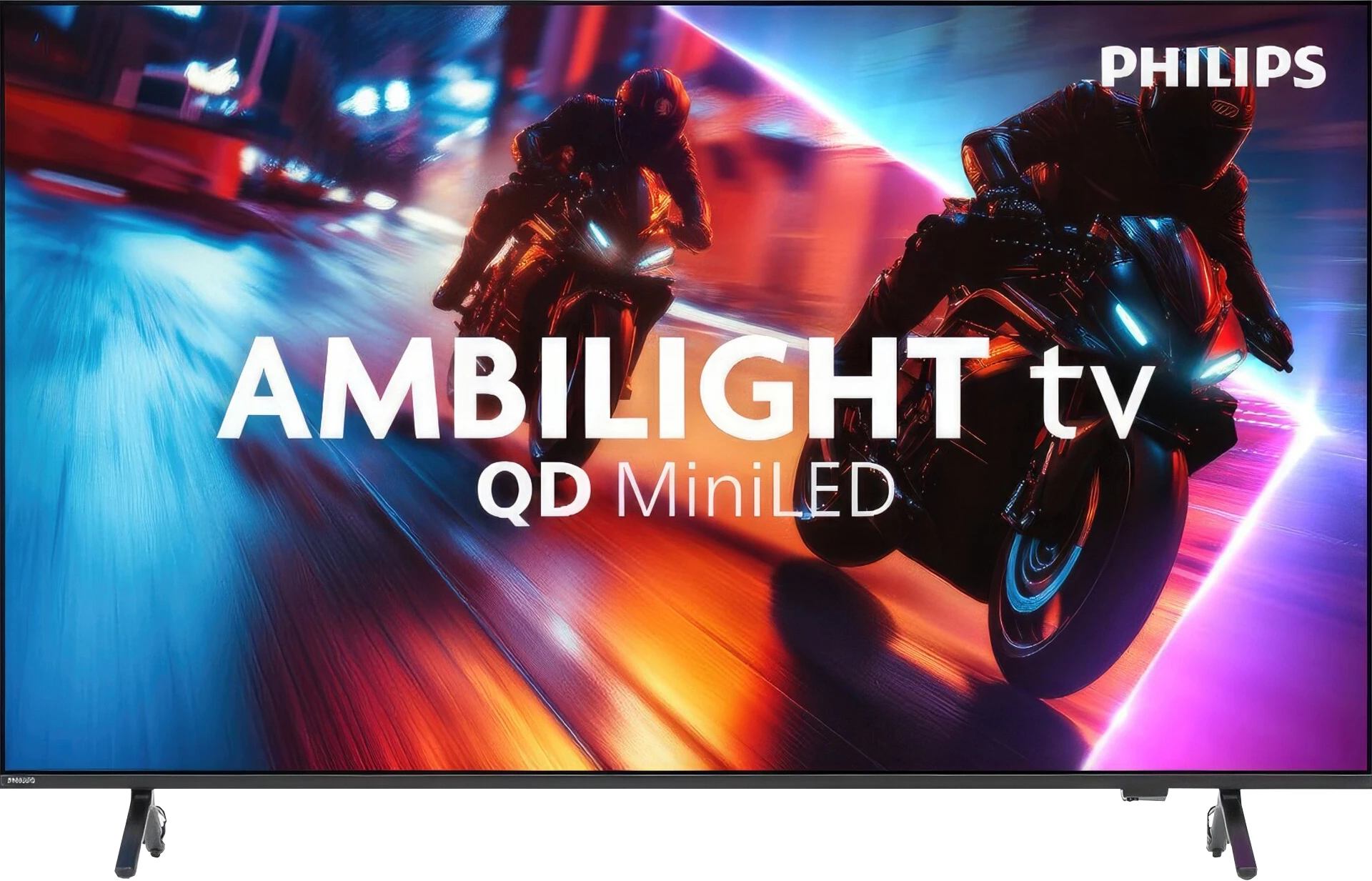
Panel type: LCD VA (wide viewing angle)
Resolution: 3840x2160
System: Tizen
Model year: 2024
Complete the survey to find out the result

Panel type: LCD VA
Resolution: 3840x2160
System: Titan OS
Model year: 2025
Complete the survey to find out the result

Overall rating
7.8
6.5
Movies and series in UHD quality
7.9
6.4
Classic TV, YouTube
7.9
6.8
Sports broadcasts (TV and apps)
7.7
6.8
Gaming on console
9.1
8.5
TV as a computer monitor
8.6
4.0
Watching in bright light
6.4
5.5
Utility functions
7.4
5.5
Apps
8.7
6.7
Sound quality
6.9
6.2
Complete the survey to find out what fits your preferences
Advantages
High brightness
Good contrast
Intuitive Tizen operating system
Great for gamers and sports fans (HDMI 2.1, 144Hz, low input lag)
Wide viewing angles - unusual for VA panels
Solid black and high contrast thanks to mini-LED backlighting
HDR brightness reaching 700–800 nits in real movie scenes
Support for multiple HDR formats including Dolby Vision and HDR10+
Ambilight – an element that adds atmosphere, especially in the evening
A lot of supported audio formats: DTS:X, Dolby Atmos, Dolby True HD 7.1
144 Hz panel with support for VRR, ALLM, and Dolby Vision Gaming
Loud sound (up to 88 dB)
Illuminated remote
Disadvantages
No recording function
No support for DTS format - may be problematic for those using Blu-ray
Titan OS is quite underdeveloped – there are significant errors and missing features in the applications
Few user-friendly features
Hybrid infrared remote
Issues with the smoothness of tonal transitions in dark scenes
The television is not suitable (aside from gaming) for working with a PC – strong dithering and poor readability of fonts, especially coloured ones and on dark backgrounds
Our verdict
Philips MLED920 is a natural continuation of last year’s PML9000 model, but it’s not a rehash. It’s clear that the manufacturer has done their homework – primarily, the local dimming algorithms have been improved, which last year could really spoil the viewing experience. Now, black levels and contrast are definitely better, and combined with Dolby Vision here, even HDR content looks quite decent. The picture can sometimes shine where it should, and it doesn’t strain the eyes in more challenging scenes. Undoubtedly, the greatest asset of the MLED920 is its unique Ambilight system. The three-sided backlighting can give films and games a whole new atmosphere – it’s as if the screen is extending beyond its boundaries, and the whole room becomes part of the viewing experience. This is something that will be appreciated not only by movie buffs but also by gamers, who, in addition to the lights, get a full set of features typical of modern gaming TVs: 144 Hz, VRR, ALLM, and Dolby Vision Gaming. In this regard, Philips has a lot to offer. But. Well, there’s a big but – this is where we reach the most difficult part of this verdict – it’s still a dual-purpose device. On one hand, we have strong picture quality and the unique Ambilight feature, on the other, there are hardware limitations that are hard to ignore. Titan OS in its current form is a big hindrance, full of bugs and shortcomings that make the TV lag behind the competition. Added to this is the price, which is by no means low for the features offered. Therefore, it’s hard to recommend it unequivocally to everyone. However, if you’re looking for Philips' brightest screen at a reasonable price, with Ambilight, a full set of features for gamers, and basic apps – the MLED920 will be quite a good choice.
TV appearance





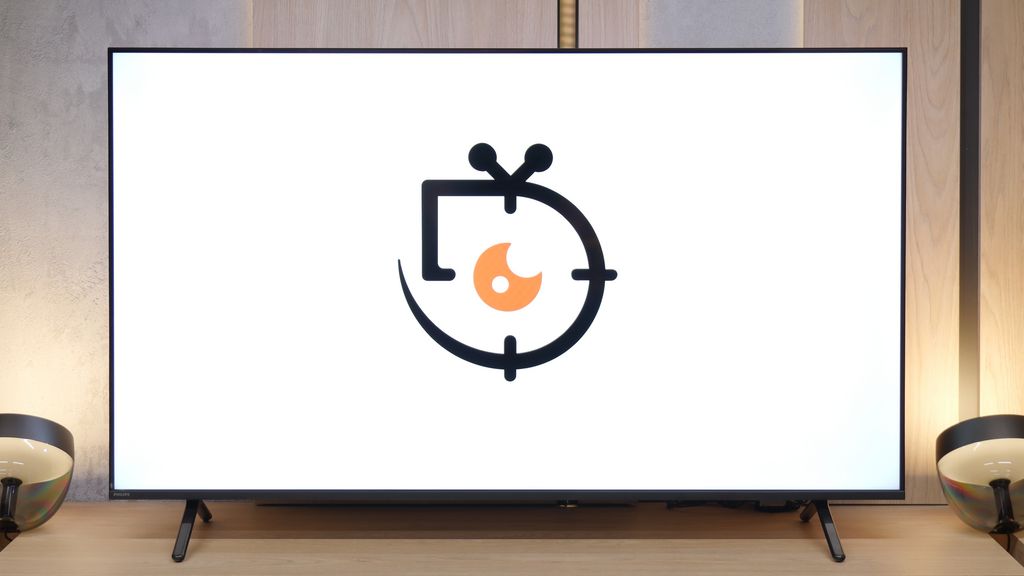
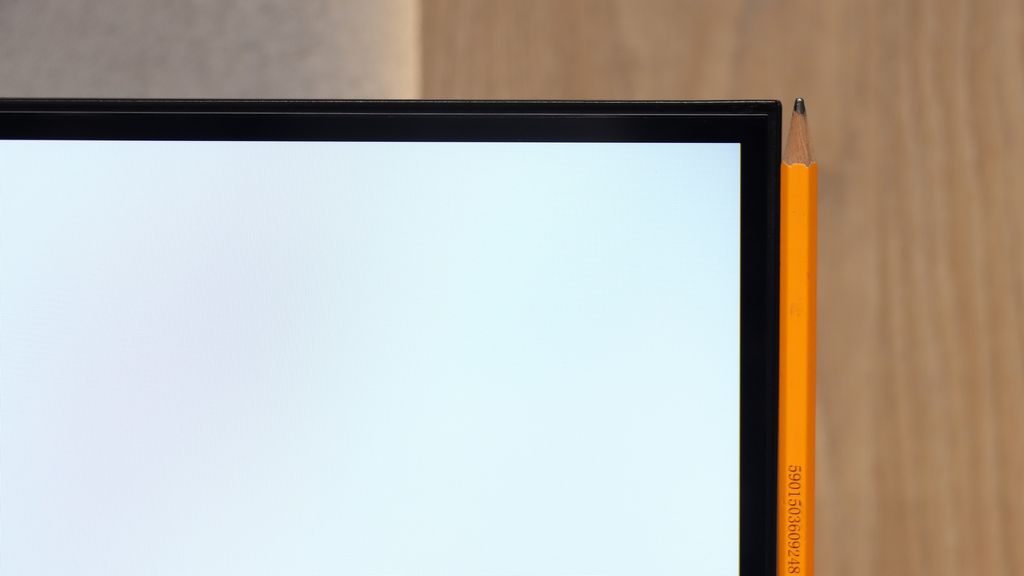
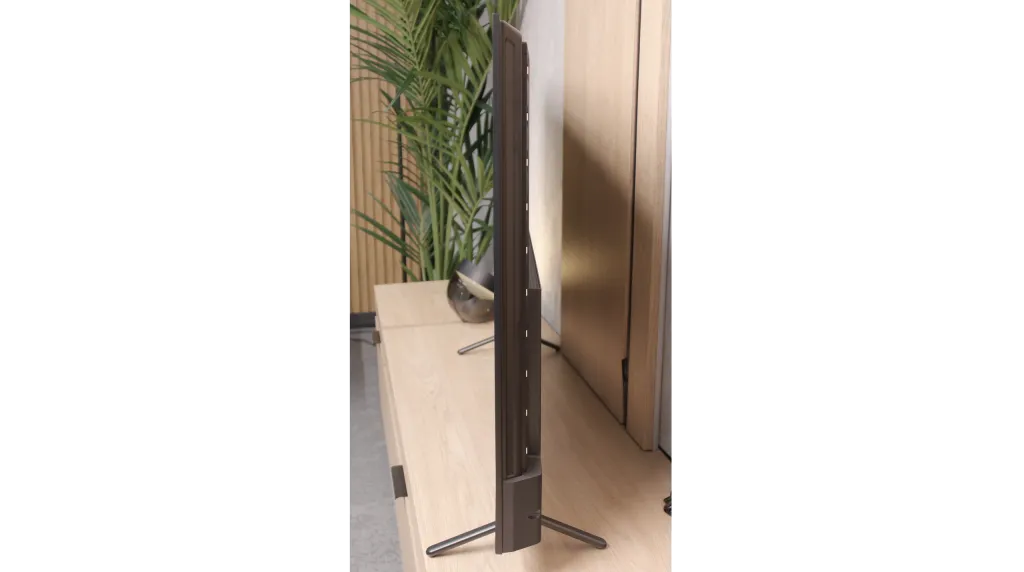
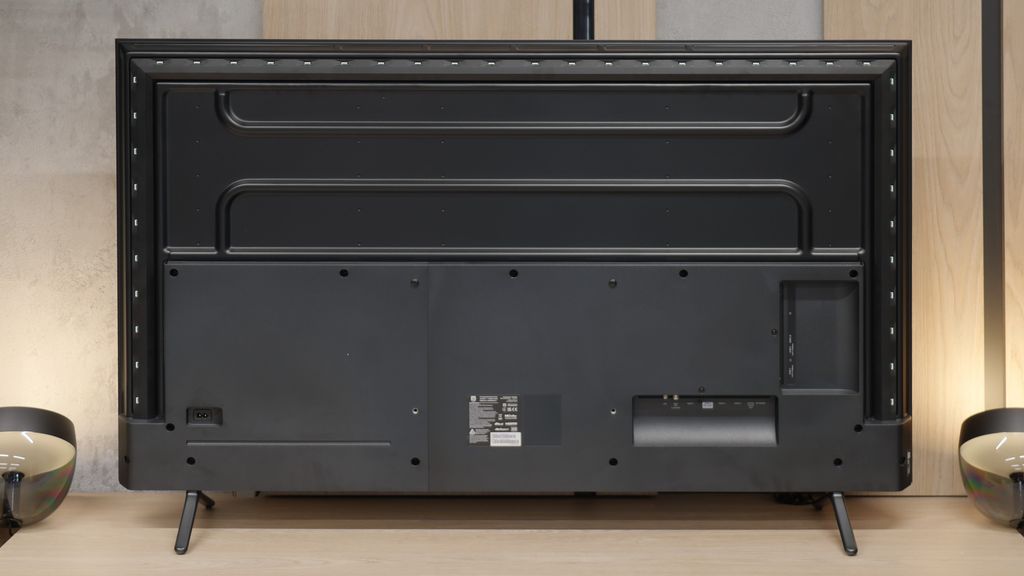
Contrast and black detail
7.9/10
7.9/10
Local dimming function: Yes, number of zones: 504 (36 x 14)
Local dimming function: Yes, number of zones: 144 (12 x 12)
Contrast:

Result
∞:1

Result
69,000:1

Result
∞:1

Result
5,500:1

Result
2,700:1

Result
298,900:1

Result
38,500:1

Result
23,950:1

Result
16,850:1

Result
8,000:1
Halo effect and black detail visibility:

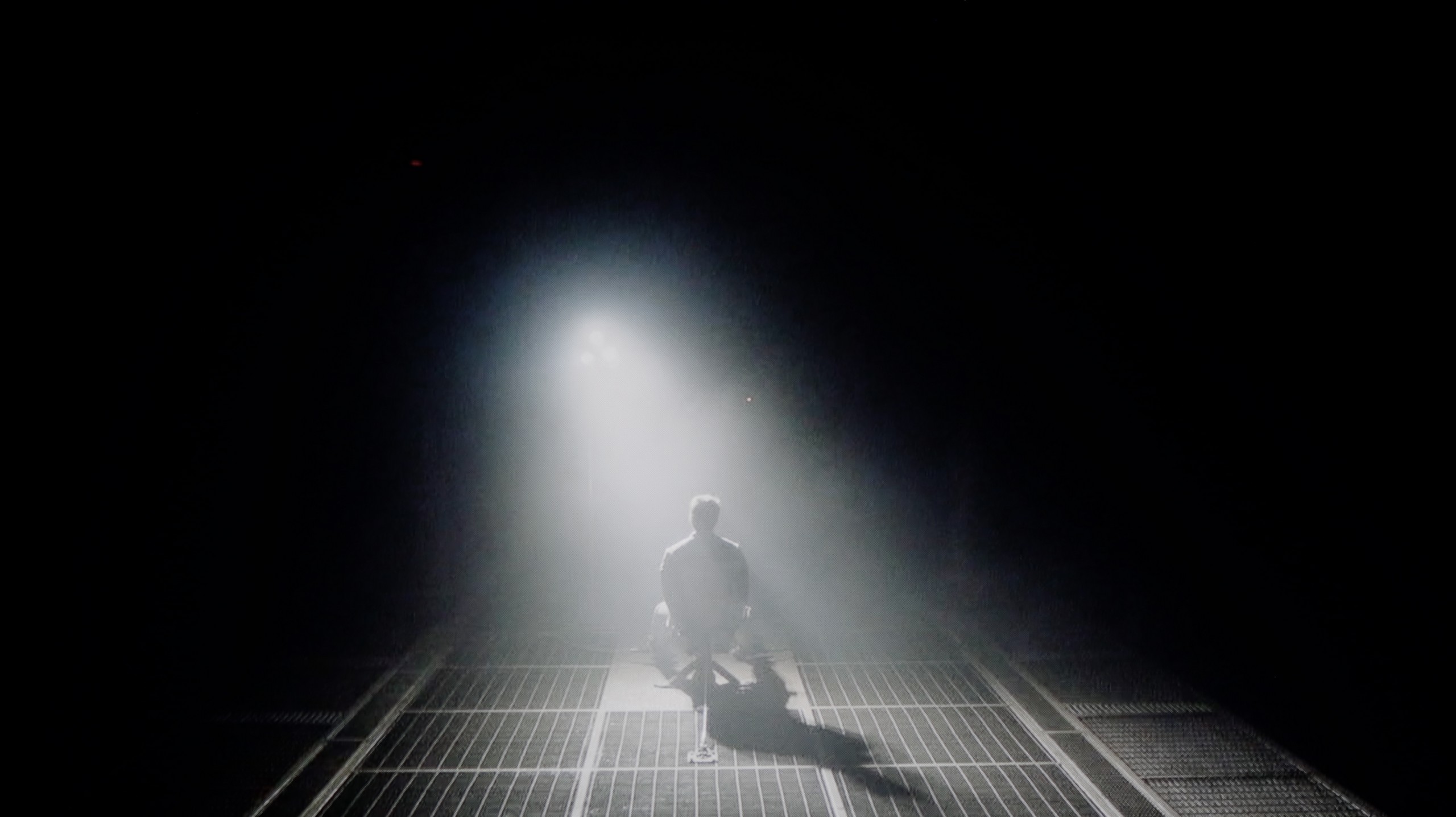
Samsung QN92D is one of the top models of NeoQLED 4K (mini LED) from the Korean manufacturer for 2024. Although it does not offer as many dimming zones as its more refined sibling Samsung QN92D, the number of 504 dimming zones in the 55-inch version is still impressive. The VA panel works well with this solution, providing excellent results in terms of contrast. The contrast in Samsung QN92D is outstanding for a non-OLED television. Even in difficult scenes, like those from the movies "Oblivion" or "Arrival," the contrast is nearly infinite and can compete with the best televisions in the OLED segment, which is quite unusual among LED-lit televisions. However, mini LED diodes have their limitations compared to organic panels, which can lead to some issues. For example, on the last test screen from Pioneer, the television has significant difficulties. This may be due to a very aggressive dimming algorithm, which sometimes causes the mini LED diodes to struggle with what to do – whether to illuminate certain elements or maintain the blacks. Despite these drawbacks, Samsung QN92D is one of the best LCD televisions in terms of contrast and blacks.
Philips MLED920 in the 55-inch version that we had the opportunity to test uses a high-contrast VA panel. The panel itself is one thing, but the real standout feature of this model is the mini-LED backlighting. This largely determines how black and contrast look – and it must be said that Philips has taken a big step forward compared to the models from 2024, where the local dimming algorithms performed just average. In this new version, it is significantly better, and the contrast presented by the MLED920 can truly surprise in a positive way. At times, it even approaches the level known from the best LCD TVs on the market – blacks can be deep, the image gains a three-dimensional quality, and viewing experiences in a dark room leave a great impression. Of course, as with any mini-LED TV, this is not an image completely free of compromises. With a large number of small elements on the screen, the local dimming algorithms can sometimes get confused – at times dimming details more than we would like and other times brightening the background, resulting in slight, light blue halos around objects (the so-called halo effect). Despite these imperfections, we must emphasize that black and contrast are truly strengths of the Philips MLED920 and definitely one of the reasons to consider it in the mid-range segment.
HDR effect quality
6.7/10
5/10
Luminance measurements in HDR:

Result
1947 nit

Result
617 nit

Result
738 nit

Result
271 nit

Result
1479 nit

Result
722 nit

Result
177 nit

Result
775 nit

Result
131 nit

Result
677 nit
Scene from the movie “Pan” (about 2800 nits)


Scene from the movie “Billy Lynn” (about 1100 nits)


Static HDR10


Dynamic: HDR10+
Dynamic: Dolby Vision


HDR luminance chart:
Philips MLED920 / MLED910
HDR luminance
Samsung Neo QLED QN90D / QN92D
HDR luminance
During synthetic tests, Samsung QN92D showed its incredible capabilities in terms of brightness. The charts clearly indicate that the television can achieve an impressive 2000 nits, giving it a solid power base to compete with the best models on the market. Such a result places it at the forefront, especially in the context of displaying HDR content, where brightness plays a key role. However, what happens when we move the tests to real film scenes? In favourable conditions, such as the first scene from the movie Life of Pi or the last scene, where the image is completely flooded with light, Samsung QN92D can achieve almost laboratory results, impressing with its brightness. The situation looks different when small, bright objects appear on a dark background, as in the fourth scene from the movie Sicario. In such cases, the television doesn't perform as well – brightness drops several times, and maximum values in the best conditions are around 600 NITS. Similar to contrast, these limitations arise from the use of an aggressive local dimming algorithm. This algorithm aims to reduce the 'halo' effect around bright objects on a dark background, but often at the expense of overall brightness. As a result, while the television performs well in bright scenes, its ability to display full brightness is limited when it comes to small, vivid elements.
Philips MLED920 in our measurements in static tests even reached around 900 nits, which for a mid-range model is quite an impressive result. In practice, this translates to a lot of satisfaction during viewing – in scenes rich in bright light, such as the first, third, or fifth test patterns, the screen was able to generate around 700 nits, which is sufficient to feel the real "HDR effect". However, it cannot be denied that the limited number of backlight zones and the typical mini-LED compromises in dimming algorithms reveal their flaws in more demanding scenes. In sequences with small light sources – like the moon or a scene from the film Sicario 2 – the television clearly prioritises maintaining deeper blacks at the expense of the brightness of these small elements. For most viewers, this is still a reasonable compromise, as the dark background looks much better, although it should be noted that the details themselves may not dazzle with intensity. The question of colours also leaves a bit to be desired. Although the employed PFS filter (the equivalent of quantum dots known from QLEDs) does its job and the colours appear quite vibrant, the coverage of the DCI-P3 colour space reaches "only" 90%. In everyday viewing, this will be sufficient, but in extremely colourful productions – like the latest Disney animations – one can notice that some tones are not as vivid as they could be in other constructions.
Factory color reproduction
6.1/10
5/10


Factory Mode
After calibration


Factory Mode
After calibration
The best mode that reproduces colours best on the Samsung QN92D has consistently been the Filmmaker mode for years. While it generally offers decent colour quality, it is not free from significant issues. Let's start with the analysis of HD/SDR image quality. The biggest challenge here is the white balance – the graphs show considerable instability, with a clear dominance of red making the image too warm. This distortion causes hues to be unnaturally shifted towards warmer tones, which can negatively affect the perception of materials with natural colours. Contrast, based on the gamma chart, although not the worst, remains far from ideal, impacting the overall image quality, especially in darker scenes.
This issue also persists with 4K materials, such as series or films of higher quality. In this case, the white balance also turns out to be faulty, with noticeable deficiencies in blue and red colour, leading to tonal shifts. Tests using the Colour Checker tool confirm these problems – all colours tend to skew towards yellow shades, further distorting the natural appearance of the image. Although the Filmmaker mode is one of the best available modes for watching cinematic content, it still requires improvements, especially in terms of colour accuracy and white balance.
Like every Philips TV we've tested, the MLED920 was primarily assessed in Filmmaker mode – the so-called "most honest" mode, designed for films and to faithfully convey the intentions of the creators. Indeed, in terms of colour accuracy, it performs best among all the modes available on the TV, but it is not without flaws. The first thing that stands out is the white balance. The image has a slight tendency towards purple-pink tones, giving it a somewhat unnatural character. However, an even bigger problem turned out to be what we mentioned earlier – image clipping. Just looking at the gamma or EOTF charts reveals that the line deviates significantly from the norm, dropping below a value of 1.8. In practice, this means "bleeding" of the brightest whites, where the image becomes almost milky. Fortunately, most of these issues can be corrected – the MLED920 responds to calibration, and with a few adjustments, image quality can be significantly improved.
Color reproduction after calibration
8.7/10
7.5/10

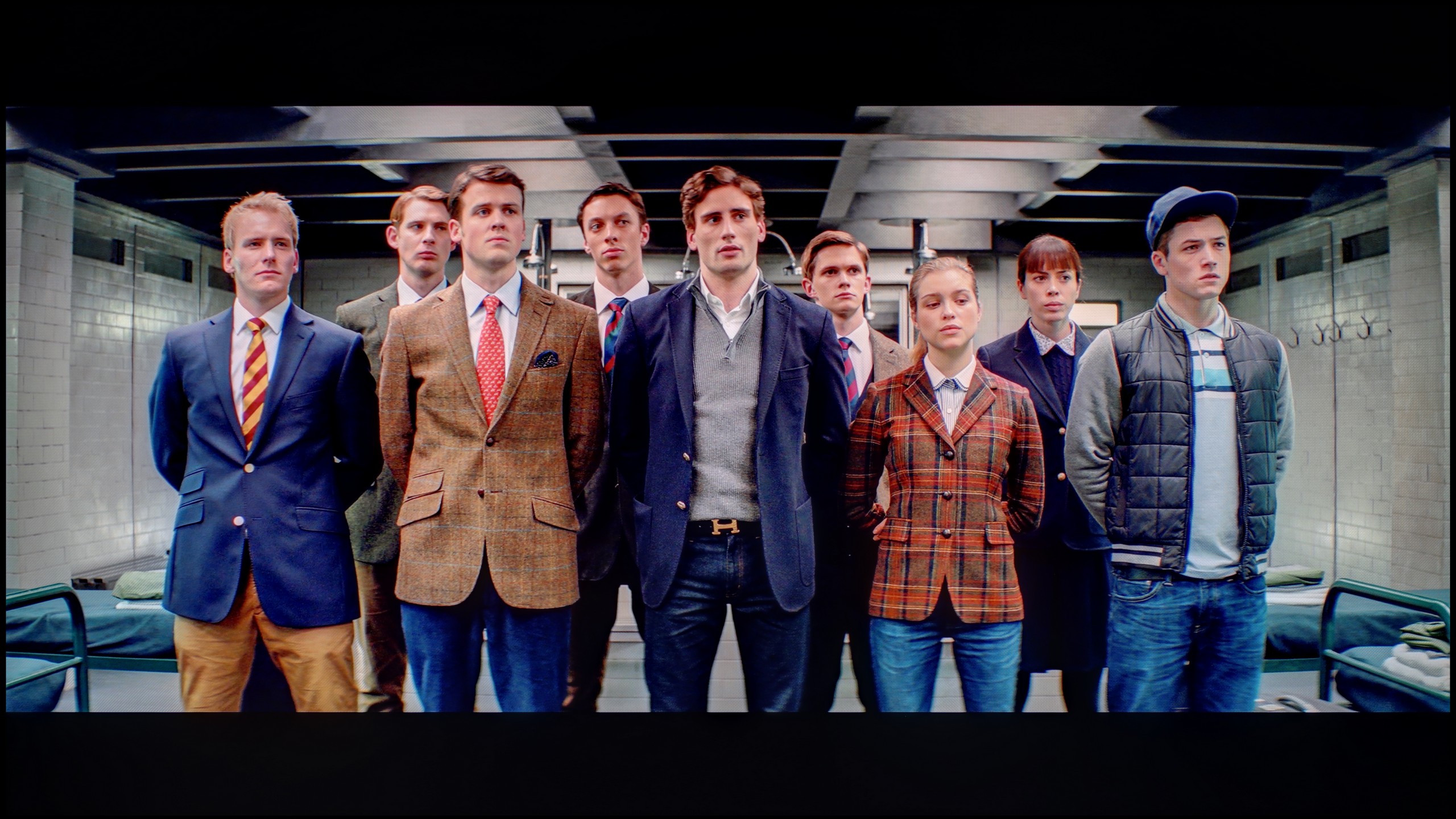

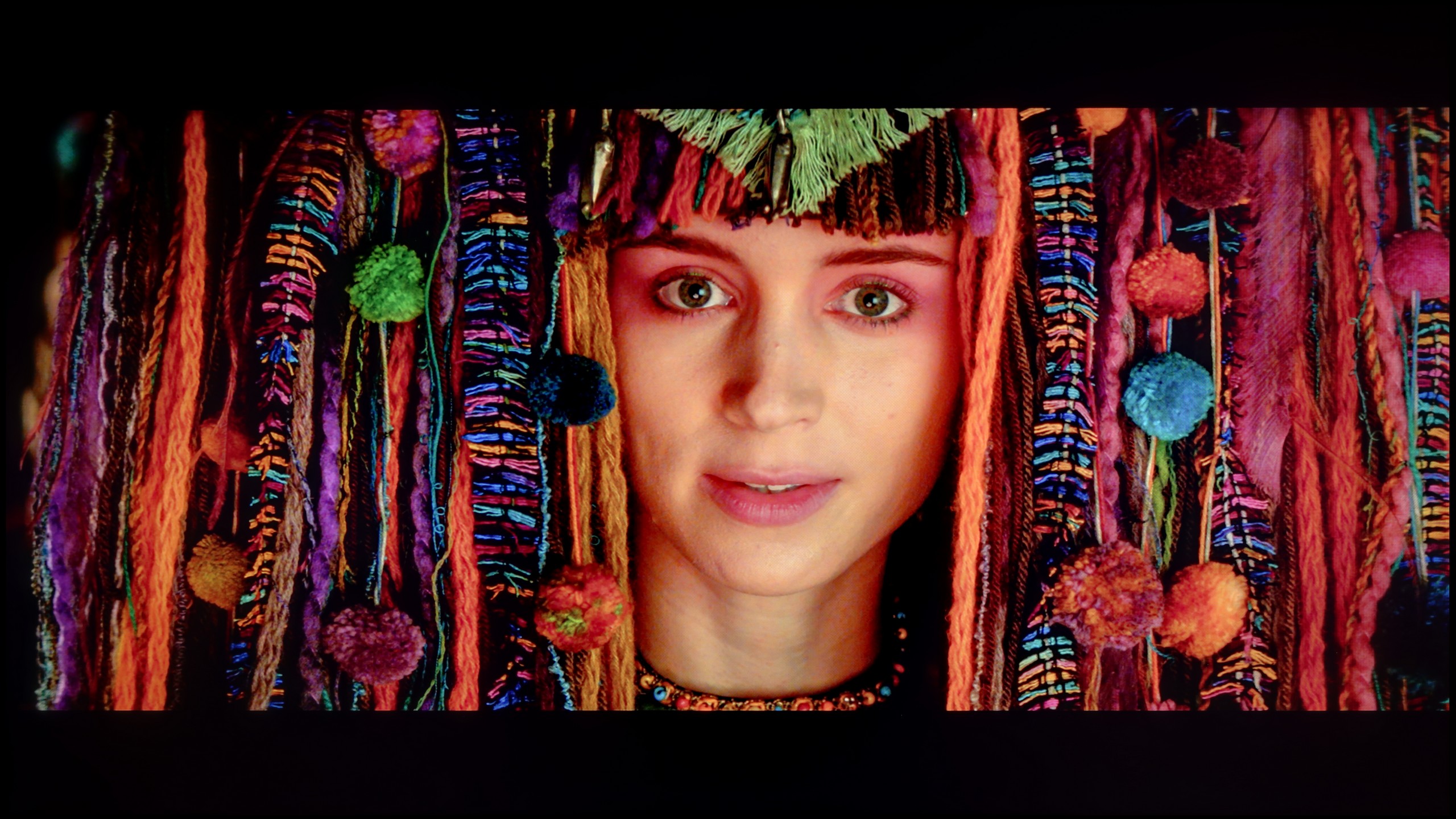
After calibration, the Filmmaker mode on the Samsung QN92D television shows significant improvement, particularly in the SDR content range. The white balance has been greatly enhanced – the previous colour misalignment and dominance of red have been eliminated, resulting in a more natural colour reproduction. In terms of brightness, although the gamma chart did not require significant adjustments, it has been stabilised, which affects the overall picture quality.
Regarding high-quality materials, the white balance has also improved in this case. However, it is worth noting the contrast. The EOTF curve, which illustrates the values in this area, appears correct at first glance. However, upon closer inspection, the television struggles to maintain appropriate contrast in film materials. The EOTF curve reveals some discrepancies, suggesting that despite the progress, there are still areas that require improvement in this aspect. The television continues to strive for excellence in contrast reproduction. A strength of this television is the saturation of colours. Skin tones are rendered very well, and although some colours may be slightly oversaturated, the overall effect looks really attractive – the colours appear rich and vibrant.
Despite some shortcomings in contrast, after calibration, the Filmmaker mode on the Samsung QN92D offers excellent image quality, with natural colour reproduction, making it a great choice for watching movies.
After calibration, we managed to largely tame the white balance – to the extent that the average viewer will not be able to detect colour inaccuracies. The characteristic pink-purple glow that previously disrupted the naturalness of the image has also disappeared. The colour palette has been organised, and the colours appear more cohesive and neutral. The gamma in SDR content looks really good after calibration – there’s no sign of the earlier “bleeding” effect in bright scenes. The image has become more contrasty and free from the milky effect that previously severely affected the viewing experience. In the case of HDR content, the improvement is also noticeable, although here it is still evident that the television goes “its own way”. The EOTF curve cannot be fully adjusted, as Philips simply does not offer tools for precise control of this parameter in its settings. In many films, the television still exposes the image “in its own way”. Despite these limitations, calibration has brought a lot of good – the majority of colour inaccuracies have been minimised and the overall image balance has significantly improved. However, one must remember that certain barriers arise from the very hardware construction and simply cannot be overcome.
Smoothness of tonal transitions
9/10
6.5/10





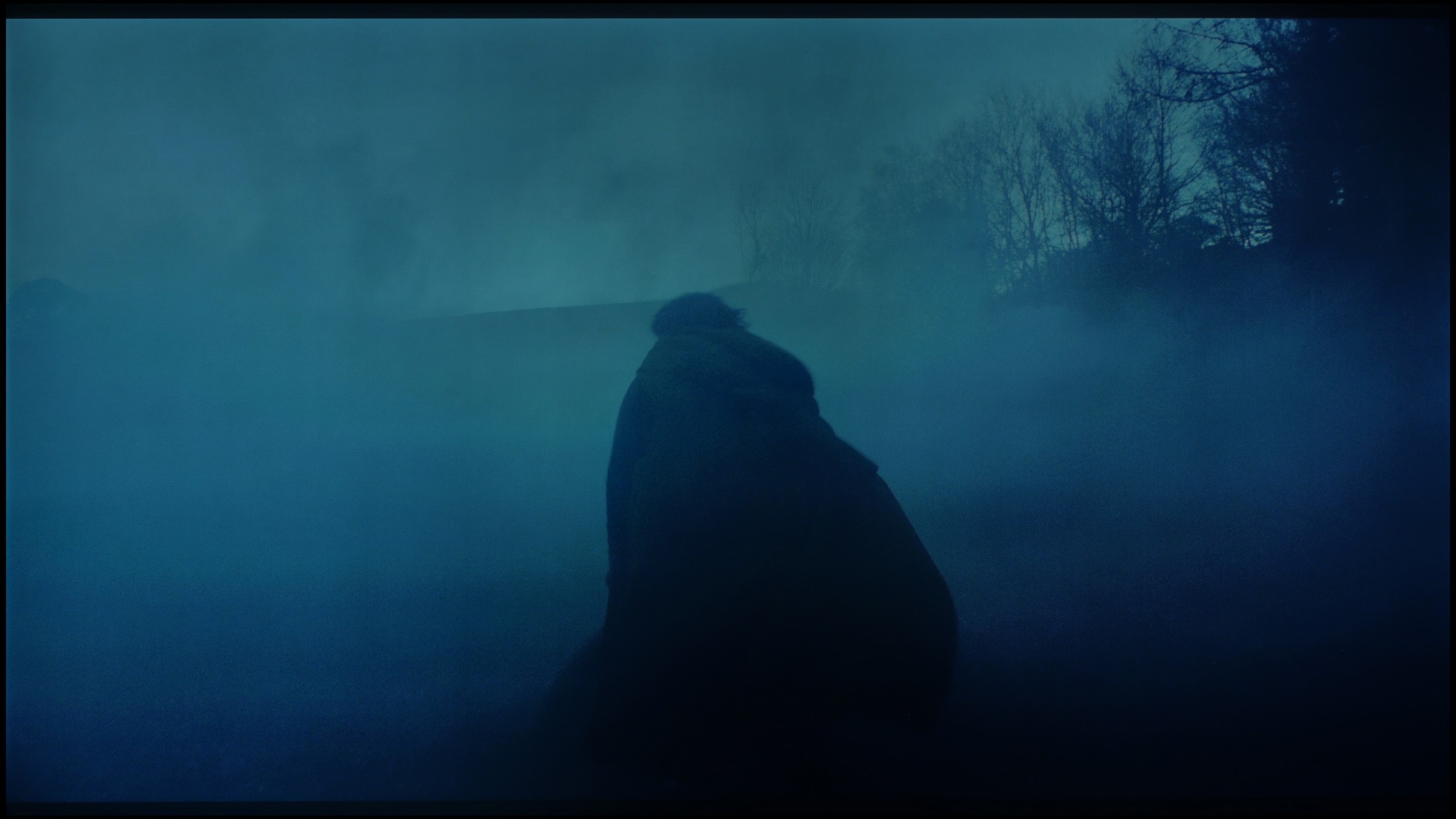






The fluidity of tonal transitions on the Samsung QN92D TV is excellent, making the image look exceptionally natural, without visible disturbances. In scenes with complex colour gradations, the TV performs brilliantly, providing smooth and uniform transitions. Competing OLED TVs in a similar price range could successfully take a cue from this, as the Samsung QN92D offers quality that places it on par with models equipped with QD-OLED panels.
The fluidity of tonal transitions in the Philips MLED920 is not its strongest suit. In our tests, we quickly noticed that the television has noticeable issues in darker scenes – examples include segments from the film The Green Knight or test grey palettes. There, you can see characteristic banding of colours and too harsh transitions between shades, which can be quite noticeable in productions with a darker aesthetic. Fortunately, the situation looks better in brighter scenes – there, the image presents smoothly and without significant artifacts.
Image scaling and smoothness of tonal transitions
7.2/10
7/10
Smooth transition function

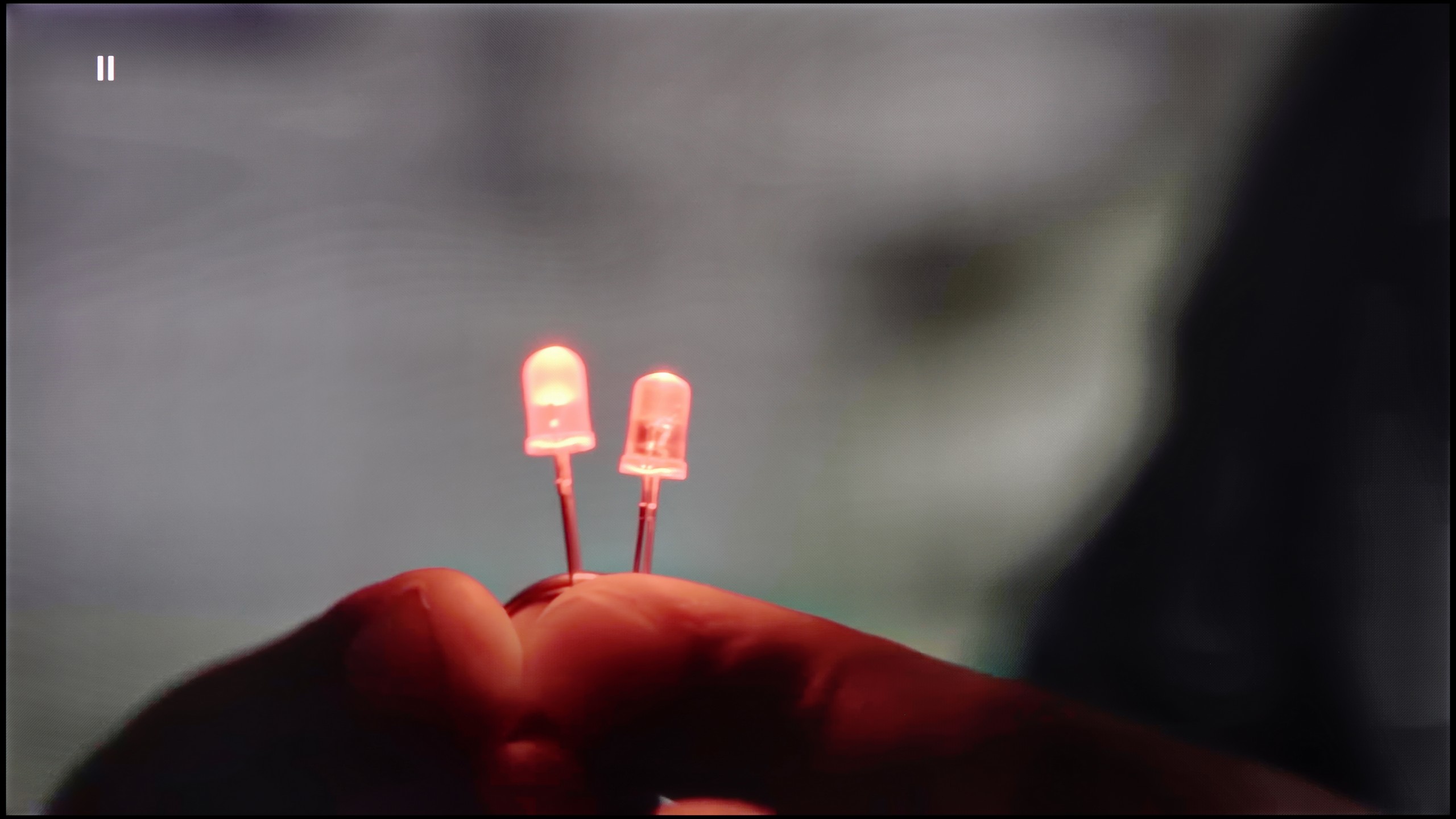
Image without overscan on the SD signal


Let's check how the Samsung QN92D TV performs with tonal transitions in very poor quality materials. The noise reduction feature shows good effectiveness, improving the fluidity of tonal transitions even in difficult conditions. However, it should be noted that, similar to other Samsung TVs, the effectiveness of this feature can lead to the removal of desirable elements, such as film grain, which can sometimes affect the authenticity of the image.
When it comes to digital processing, the Samsung QN92D TV also performs excellently. During tests, the image looked very good, with the model presented in a natural and correct way. Details, such as branches in the background, were reproduced with great precision, highlighting the TV's ability to enhance the quality of low-resolution materials.
The manufacturer has equipped this model with several features that improve signal quality, and although we usually approach such “enhancers” with caution, here they prove to be really helpful. The key option is called “distortion reduction” – it works best at a medium level because, on one hand, it effectively smooths out unwanted steps and colour transitions, and on the other, it doesn’t excessively cut details, meaning the image still looks natural.
It’s a bit worse when it comes to upscaling. Lower quality materials – such as the test video with the model – appeared soft and lacking sharpness. Of course, it can be partially adjusted with the sharpness slider in the menu, but the result still falls short compared to what competitors offer at a similar price. Philips still needs to work on this aspect because, in light of the successful improvement of tonal transitions, the upscaling simply comes off weak.
Blur and motion smoothness
7.5/10
7.7/10

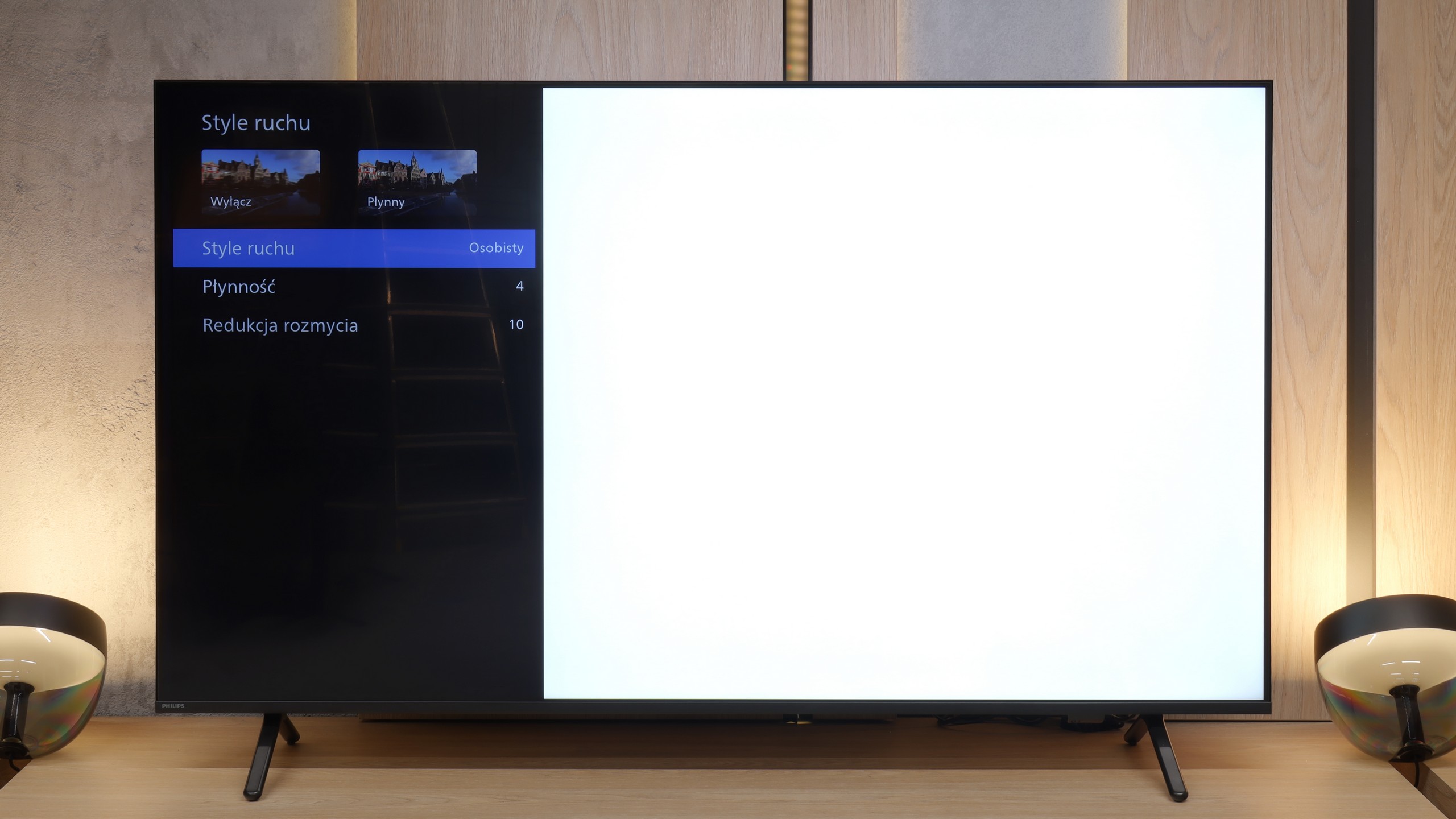
Blur (native resolution, maximum refresh rate):






Blur (BFI function enabled):
Image flickers in this mode



Smużenie ():
Smużenie (4K@144Hz):

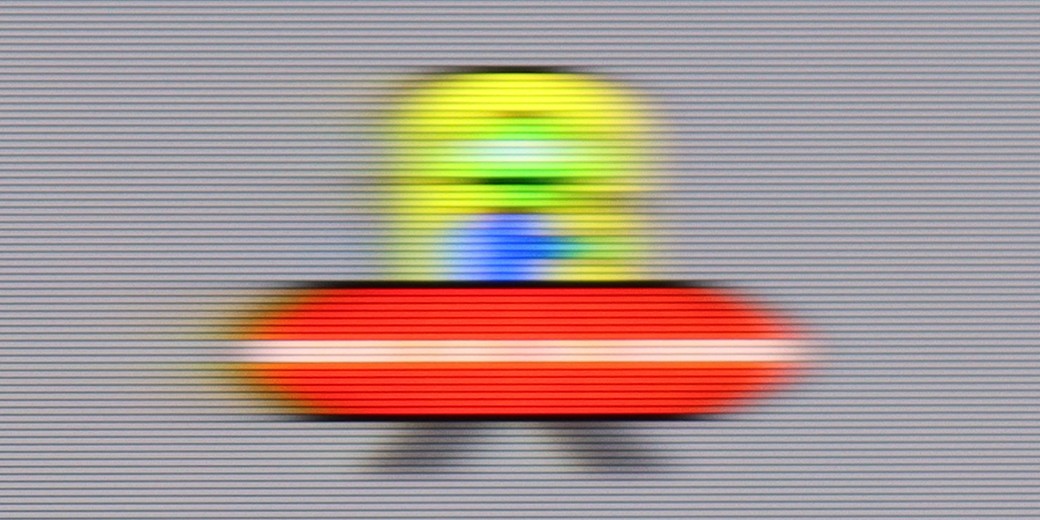

The Samsung QN92D television is equipped with a 144 Hz panel; however, when watching content using the smoothness feature, the maximum refresh rate is 120 Hz. As a result, both gamers and sports enthusiasts will be satisfied with the picture quality. It’s also worth mentioning the available options for image enhancement, such as the "motion blur and judder reduction" feature, which allows users to adjust smoothness to their individual preferences on a 10-point scale. Motion blur reduction increases the sharpness of fast-moving objects, while judder reduction smooths out motion, eliminating the "stutter" effect. With these advanced settings, one can achieve optimal visual experiences, making the Samsung QN92D perfect for both dynamic scenes and intense gaming.
In terms of motion blur, the television performs really well, and it’s hard to pick faults. The only note we might have is a slight overshoot effect noticeable on dark backgrounds during our test with "Ufoludkiem." Nevertheless, thanks to the advanced smoothness settings, the Samsung QN92D excels in both dynamic scenes and intense gaming.
Philips MLED920 features a 144 Hz panel, which immediately suggests that we shouldn’t complain about motion smoothness. And indeed – for a VA panel, the motion blur is relatively low here, and while you can sometimes notice slight issues on darker backgrounds, they’re not something that will catch the eye of most people during regular viewing.
A big plus is also the presence of a motion smoother called “Motion Style.” It allows you to adjust the smoothness to your own preferences – if someone prefers a more “theatrical,” almost television-like character of the image, they can increase the sliders, and if they want to maintain the natural “judders” of a cinematic frame, they just need to set lower values. This way, everyone can find a happy medium.
Console compatibility and gaming features
9.5/10
9.8/10
- ALLM
- VRR
- VRR range48 - 144Hz48 - 144Hz
- Dolby Vision Game Mode
- Correct implementation of HGIG
- 1080p@120Hz
- 1440p@120Hz
- 4K@120Hz
- Game bar

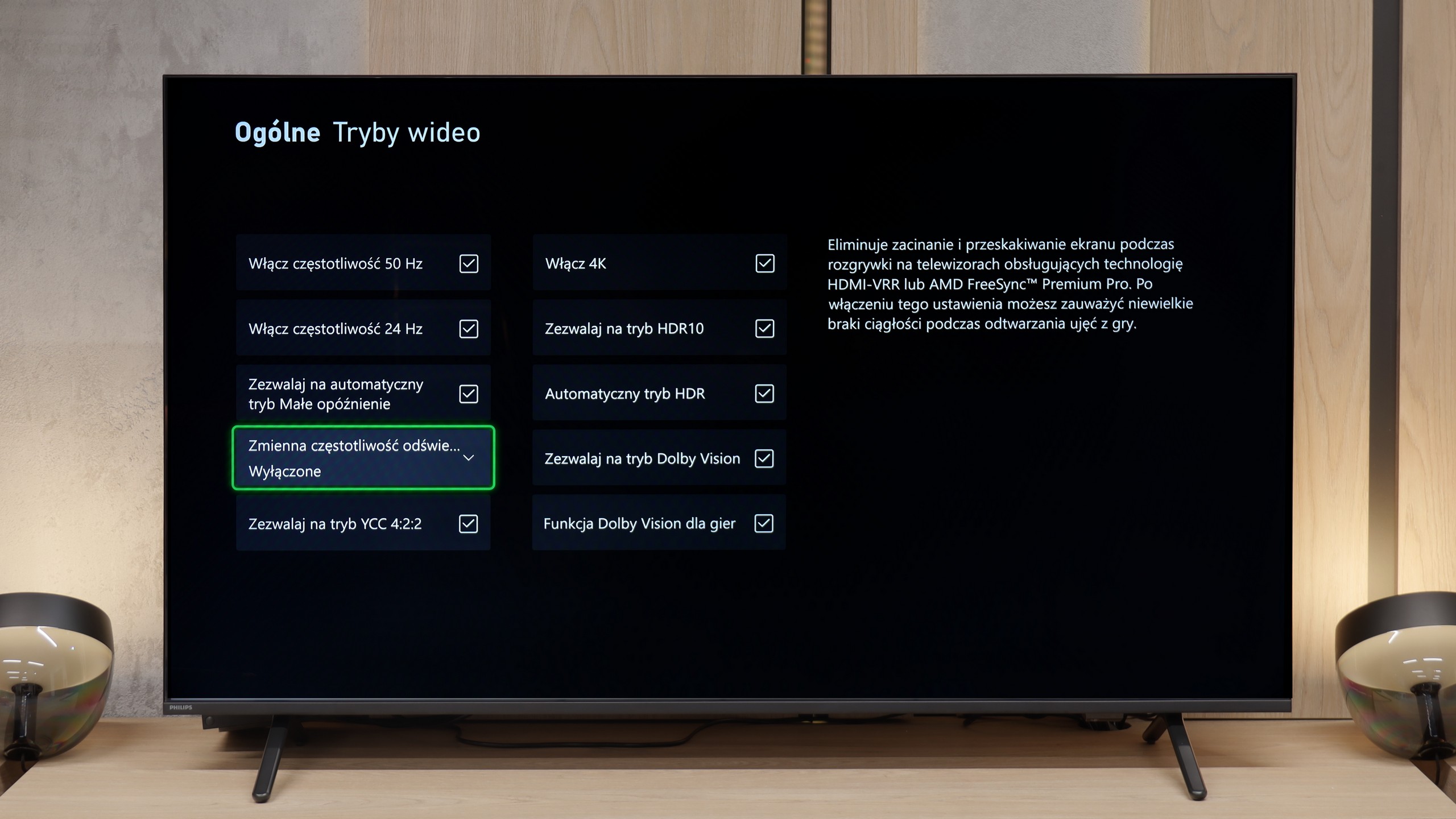

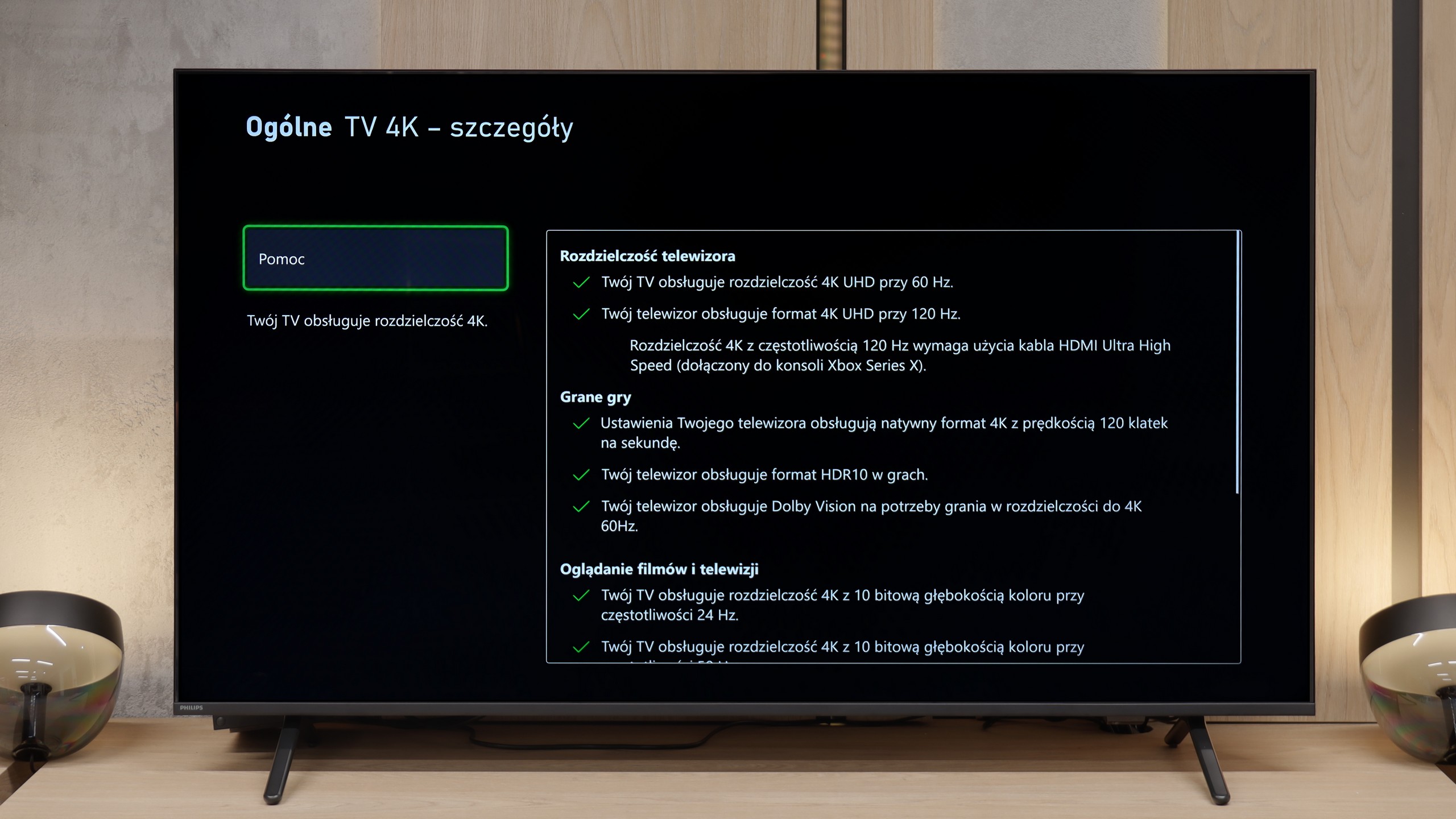

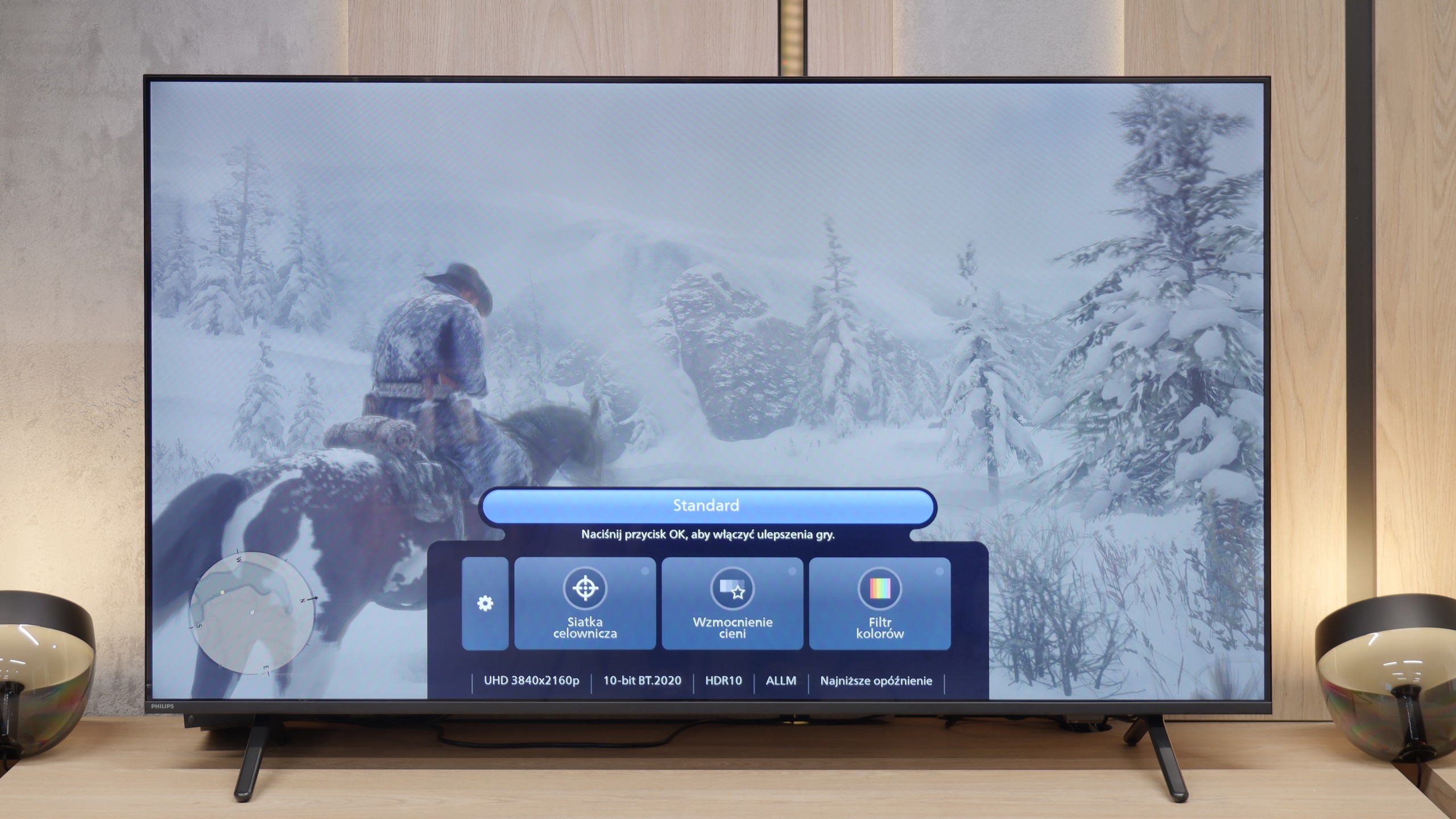

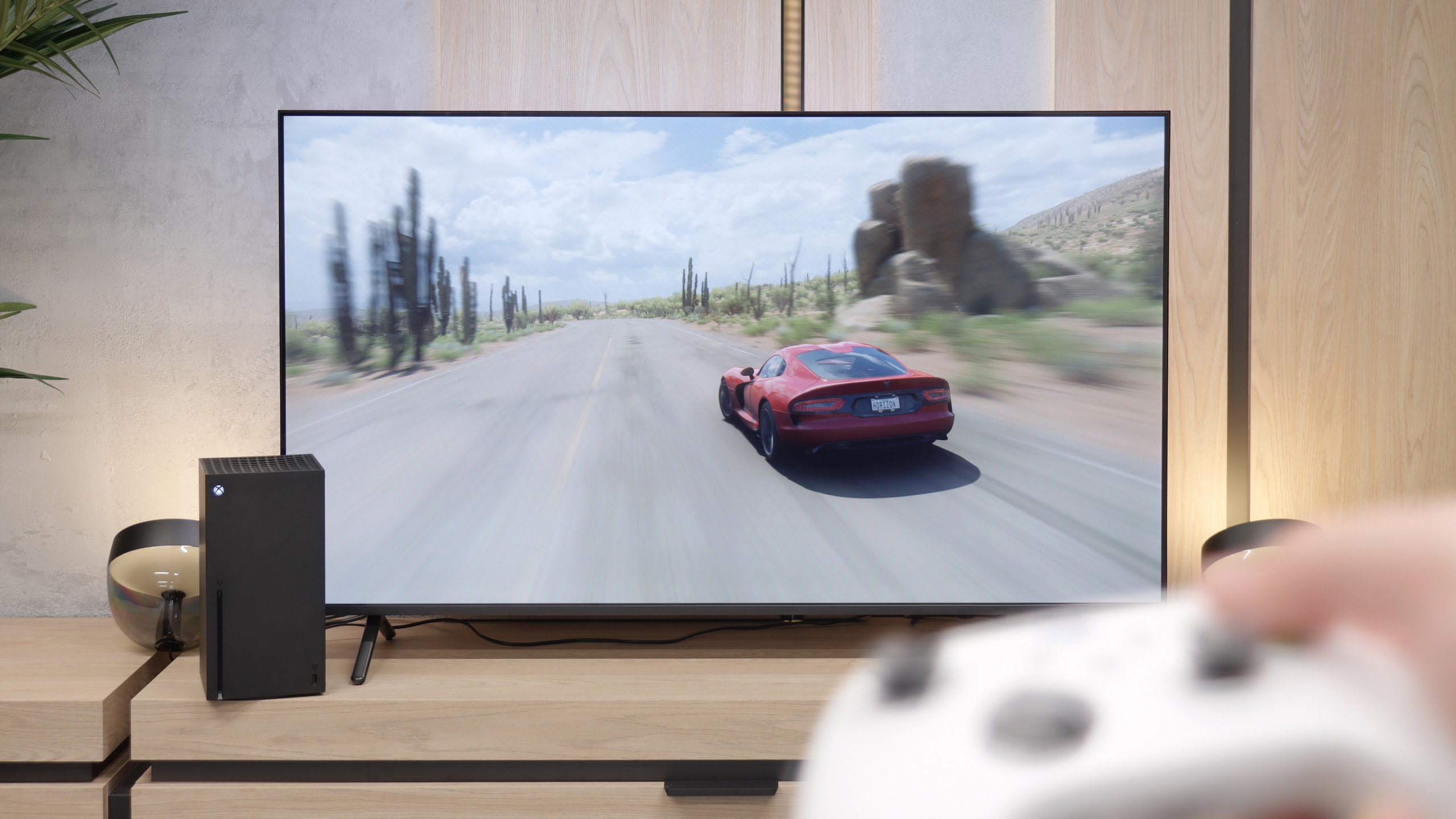
The television Samsung QN92/QN90 is an excellent choice for avid gamers, deserving of the highest recommendations. This model offers practically all the features available on the market in terms of gaming, making gameplay even more exciting. One of the key differentiators is the 120 Hz panel, which ensures exceptional motion smoothness, crucial during dynamic action games. The television also boasts low input lag, guaranteeing instant reactions to player commands. Additionally, technologies such as VRR (Variable Refresh Rate) and ALLM (Auto Low Latency Mode) adjust the refresh rate and automatically switch the television to game mode, translating to even better gaming experiences. Another advantage is the Xbox app, which allows gaming of favourite titles directly on the television, eliminating the need for a console. This is a typical feature of Samsung televisions, making them exceptional in the gaming world.
Auto Motion Plus Game is a feature that really deserves praise for Samsung. It is a motion smoother that works wonderfully in games, creating the impression of a higher frame rate – a 30 frames per second image looks like 45, and 60 Hz becomes close to 90 Hz. Importantly, this feature does not introduce significant lag (input lag does not exceed 25 ms), so it does not negatively affect gameplay comfort, unlike many other smoothers available on the market. This allows gamers to enjoy a much smoother image without compromising responsiveness.
For gamers, the Philips MLED920 is truly a complete tool. The manufacturer has taken care of everything that is now considered standard in televisions for consoles and PCs. It has ALLM, so the console automatically switches the screen to game mode, there’s VRR and a 144 Hz refresh rate that ensures smooth gameplay even in fast-paced titles. All key HDR formats are supported – including HGiG and Dolby Vision Gaming for Xbox – which means that regardless of what you’re playing and on which console, the television will be able to extract the maximum potential from the image. In everyday gaming, the Game Bar proves useful too – a relatively simple implementation by Philips, but a functional panel where you can quickly check image parameters, enable VRR, or adjust details without leaving the game. It’s not as elaborate as the competition, but it does its job without any complaints. And finally, something that sets Philips apart from the competition – Ambilight. The three-sided LED backlighting can make a huge impression in games, especially in the evening. It’s also a way to slightly 'expand' the screen and create a greater sense of immersion. And since coloured LEDs have recently become almost an essential element of a gamer’s room, the MLED920 fits perfectly into this trend.
Input lag
9.9/10
9.6/10
SDR
HDR
Dolby Vision
The input lag category is crucial for gamers, and the Samsung QN90D performs exceptionally well in this aspect. Input lag values below 13 ms are impressive, meaning that the delay between pressing a button on the controller and the reaction on the screen is minimal. Such a low value allows for smooth and responsive gaming experiences, which will certainly please both casual gamers and professionals for whom every millisecond of reaction time matters. This makes the Samsung QN92D an excellent choice for those who value precision and speed in gameplay.
The input lag on the Philips MLED920 is really very good – in 120 Hz mode, we measured values below 10 ms, which places this model among the absolute top of LCD TVs in terms of responsiveness. Even at 60 Hz, a result of around 18 ms is fully acceptable and won't interfere with any type of gameplay. One exception is the Dolby Vision mode at 60 frames, where the latency can increase to as much as 35 ms. This is a result that may be a bit glaring for esports players, but it must be stated honestly – for most so-called "casual gamers," it will be absolutely imperceptible. Especially since we're talking about values that still allow for comfortable gaming without major compromises.
Compatibility with PC
8.6/10
4/10

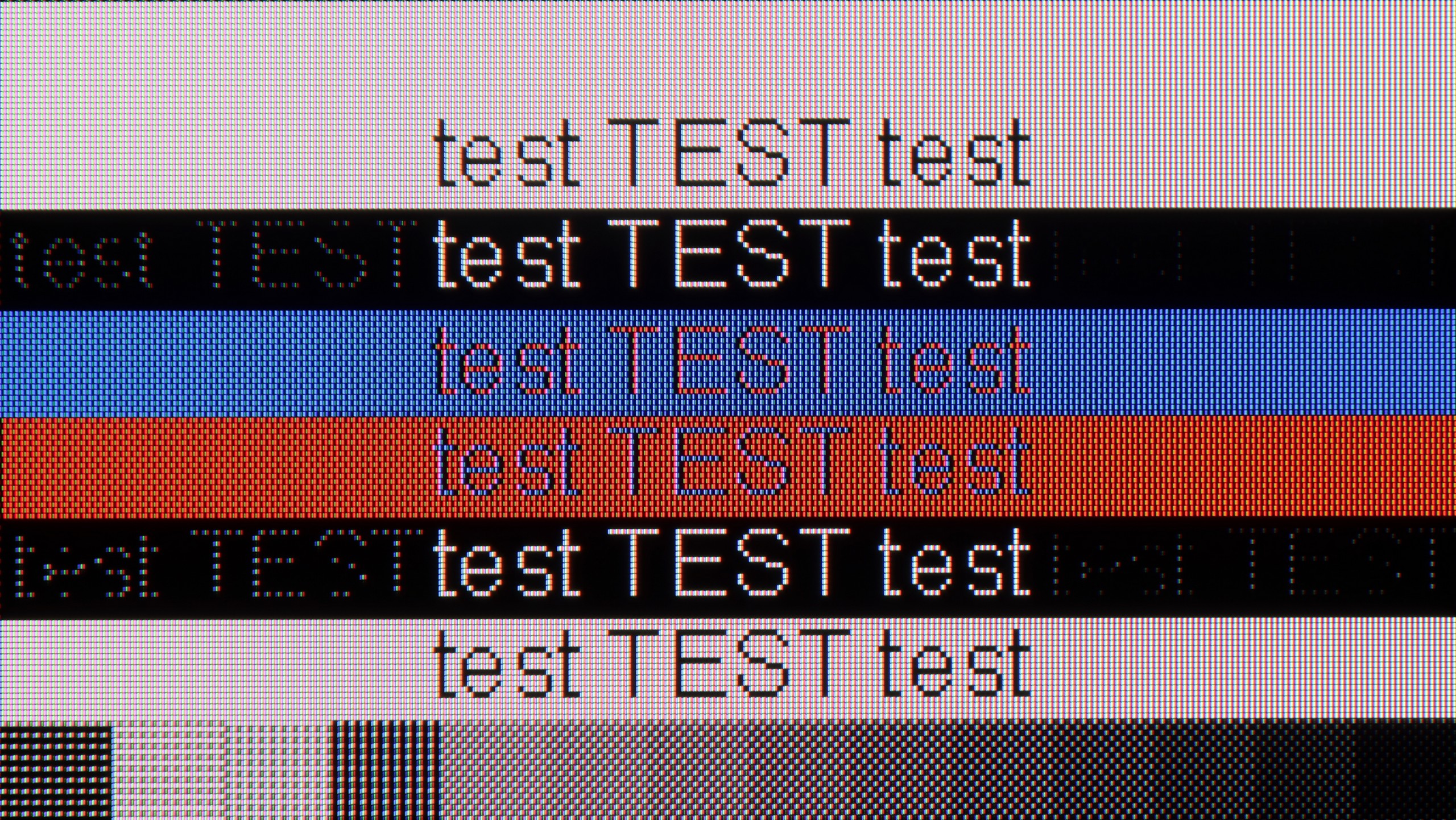
The television stands out with its high performance, supporting chroma 4:4:4 and offering exceptionally low input lag. These features allow users to enjoy fluidity and responsiveness, making it an excellent choice for office work and everyday applications. However, one noticeable drawback is the poor visibility of horizontal lines on dark backgrounds. On the test screen, letters on the right side appear more like vertical lines, which can be frustrating for some users. Nonetheless, the television generally works well with a computer, providing comfort in carrying out daily tasks. It’s also worth mentioning in this paragraph the "Remote PC" feature; thanks to Microsoft’s collaboration with the Korean giant, we can seamlessly pair Windows PCs and use Office 360 apps.
When it comes to working with a PC, the Philips MLED920 evokes quite mixed feelings. On one hand, it looks impressive on paper – we have 144 Hz, support for G-Sync and FreeSync, so in terms of gaming on PC, the TV does not disappoint. Anyone looking for a large screen for computer games gets a solid package of features here. However, when we try to use it as a typical monitor for everyday work, its limitations quickly become apparent. The fonts do not look the best – there is noticeable strong dithering, coloured letters can be jagged, and with very dark text, there are even strange anomalies, as if the panel is losing thin lines and having trouble reproducing them correctly. In short: For PC gaming, yes. For any work and reading text: a definite no.
Viewing angles
7.1/10
3.2/10
In the case of TVs with VA panels, you can usually expect limited viewing angles, however Samsung QN90D surprises in this category. Thanks to the applied coating that widens the viewing angles, the TV offers really good performance, which is rarely seen in devices with this type of panels. Although VA panels are typically not the best in this regard, in this model the image remains clear and saturated even when viewed from the side, making it a great choice for larger rooms and group viewing.
The viewing angles on the MLED920 are classic for VA type panels – even a slight tilt from the centre causes the image to start losing colours, contrast weakens, and the overall picture becomes quite flat and less appealing. There are no miracles here. So if you’re watching films with a larger group and everyone is sitting a bit to the side, this will be slightly noticeable. On the other hand, you get what you pay for: thanks to this panel, the MLED920 can display a much deeper black than TVs with IPS panels.
TV efficiency during daytime
6.4/10
5.5/10

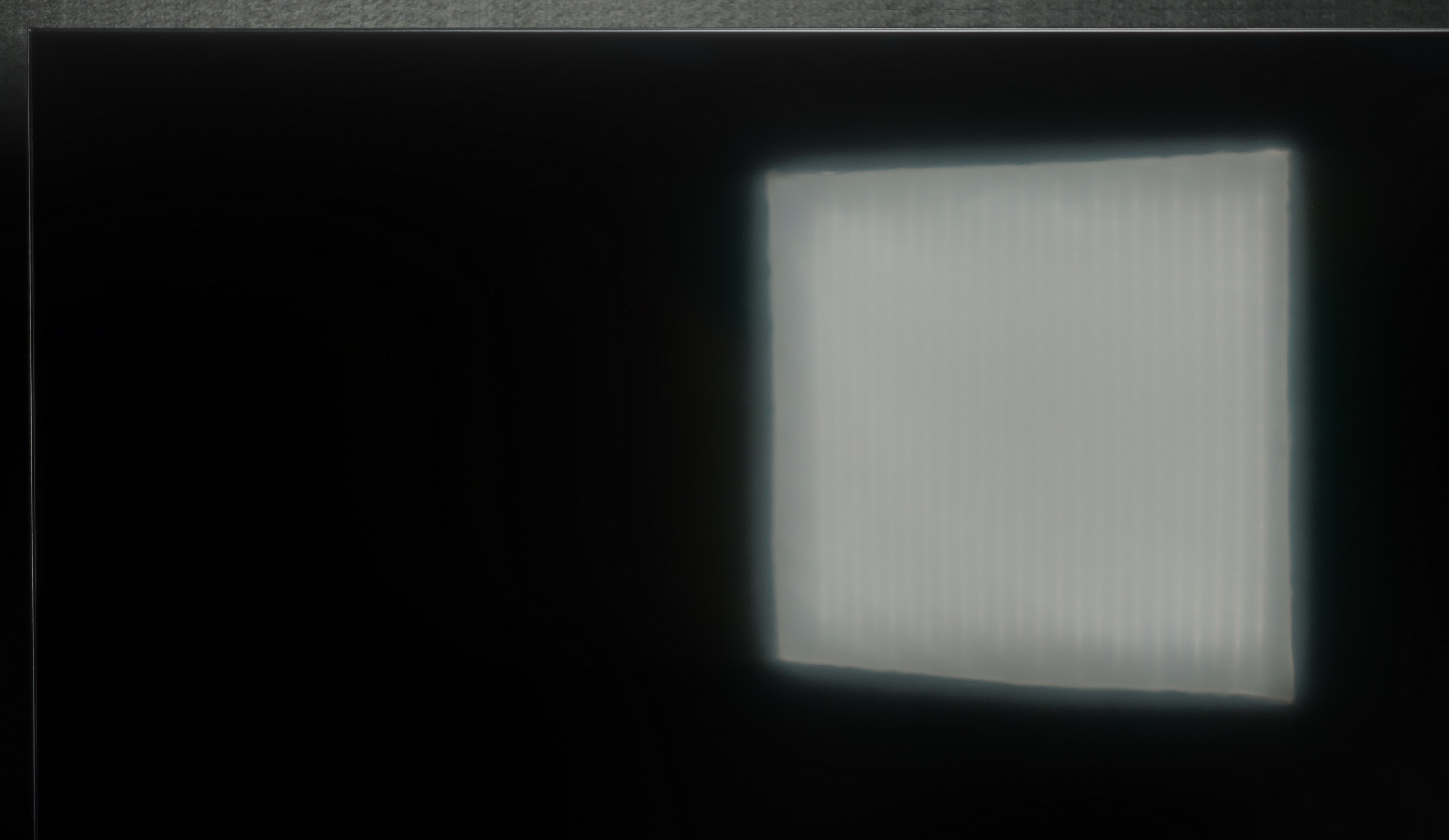

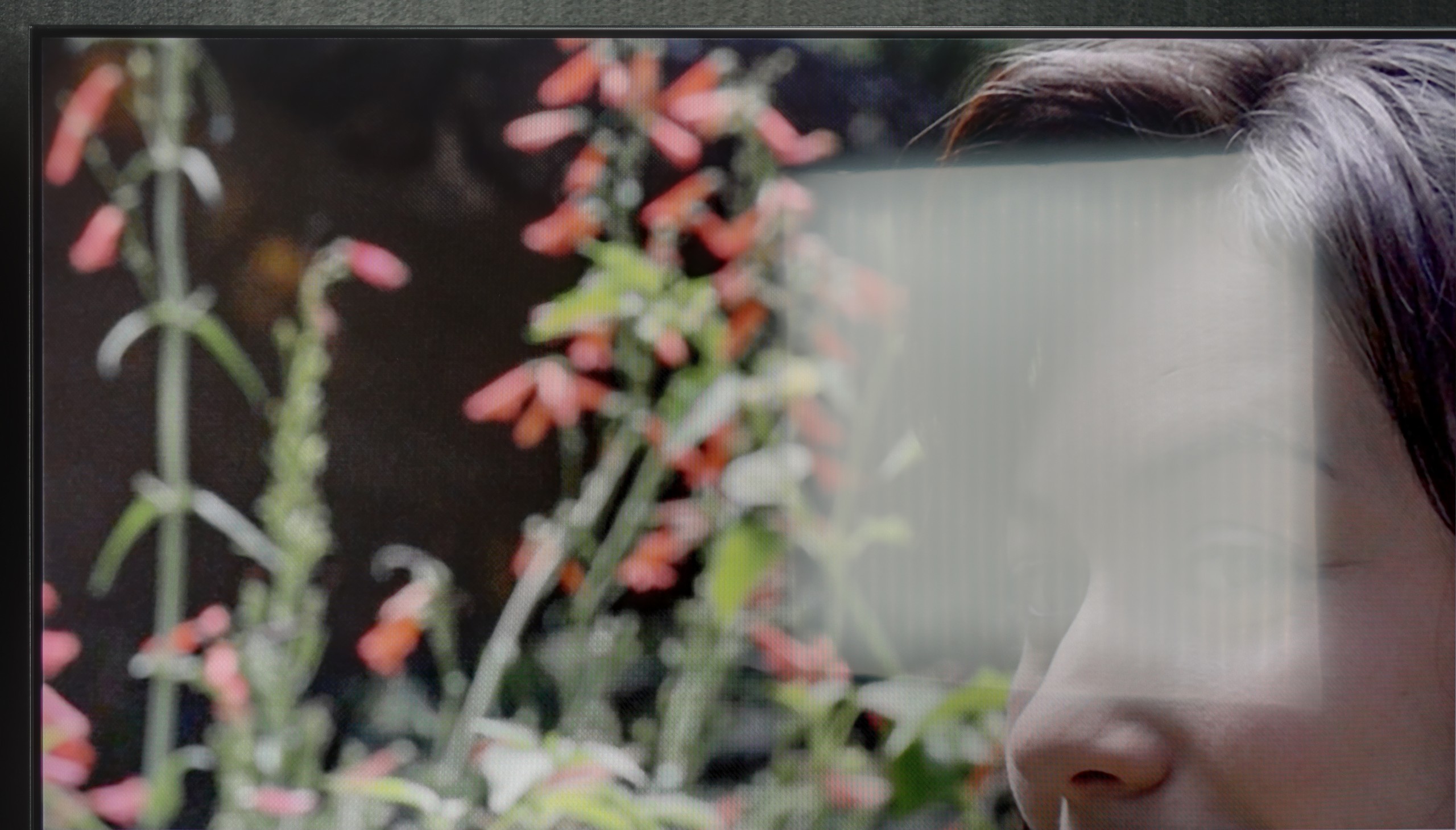
Matrix brightness
Average luminance SDR
Philips MLED920 / MLED910: 421 cd/m2
Samsung Neo QLED QN90D / QN92D: 629 cd/m2
The television performs well in bright rooms due to its high brightness, especially when watching standard television. A constant brightness level of 600 nits ensures excellent visibility even in intense daylight. Unfortunately, despite the use of a satin finish, handling reflections is average, which can affect viewing comfort. An additional downside is the matrix that improves viewing angles, which causes reflections of sunlight to spread vertically, potentially further reducing viewing comfort in a bright environment.
Philips MLED920 performs quite well in everyday use. The satin finish on the panel effectively reduces reflections, and in most moderately sunny living rooms, it manages unwanted glare quite well. However, it's important to remember that this is not a TV that dazzles with brightness – the average value in SDR hovers around 450 nits. In very bright rooms, particularly with large south-facing windows, the screen doesn't always stand up to the intense daylight. In such situations, it's worth supporting it with even light curtains, so viewing comfort doesn't suffer too much.
Details about the matrix
Subpixel Structure:

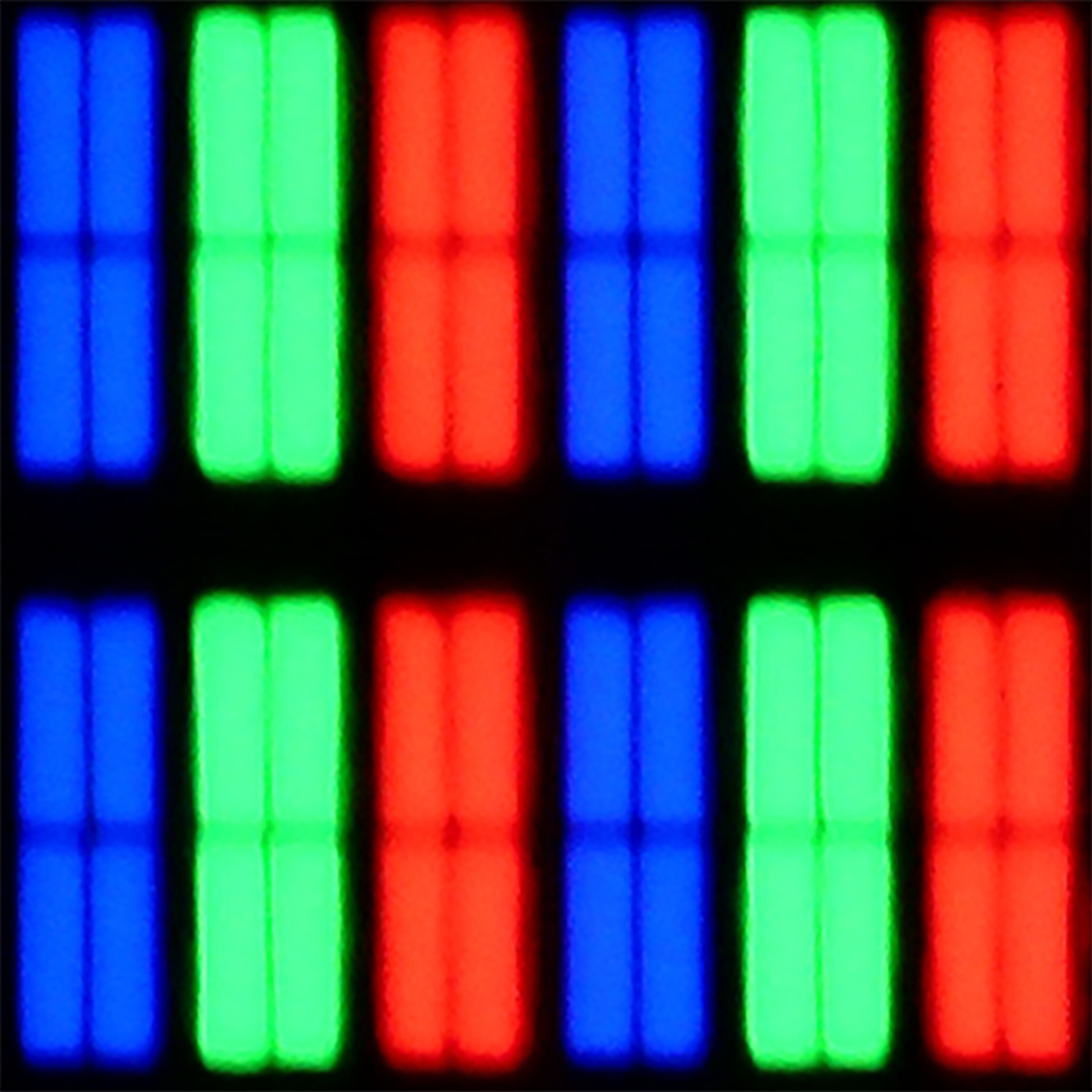
Panel uniformity and thermal imaging:

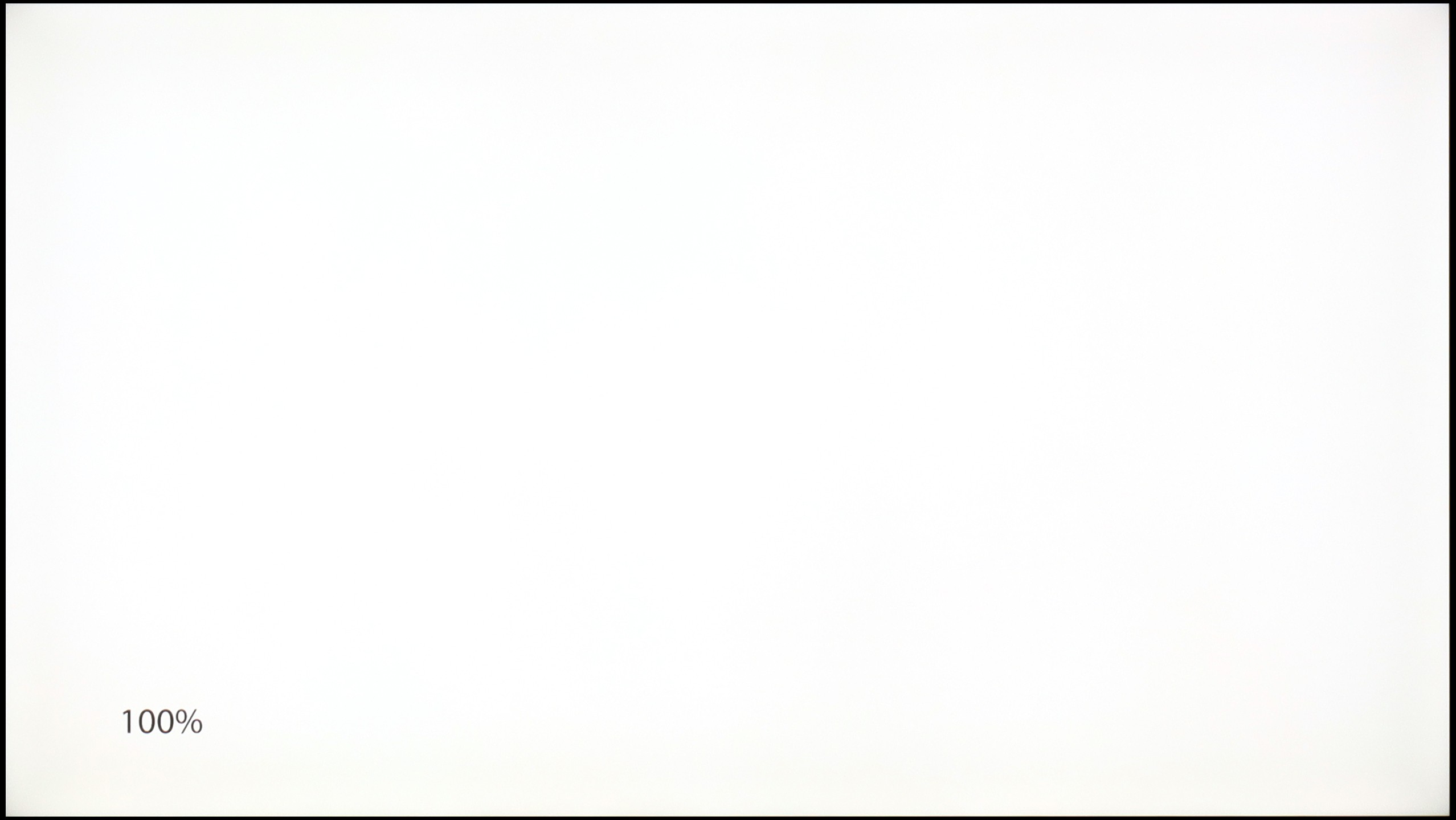
Samsung Neo QLED QN90D / QN92D
Philips MLED920 / MLED910
TV features
7.4/10
5.5/10
- HDMI inputs0 x HDMI 2.0, 4 x HDMI 2.1 48Gbps0 x HDMI 2.0, 4 x HDMI 2.1 48Gbps
- OutputsToslink (Optical audio), eARC (HDMI), ARC (HDMI)Toslink (Optical audio), eARC (HDMI), ARC (HDMI), Mini-Jack (Headphones)
- Network InterfacesWi-Fi 2.4GHz, Wi-Fi 5GHz, Ethernet (LAN) 100MbpsWi-Fi 2.4GHz, Wi-Fi 5GHz, Ethernet (LAN) 100Mbps
- TV receptionDVB-T, DVB-T2, DVB-S, DVB-S2, DVB-CDVB-T, DVB-T2, DVB-S, DVB-S2, DVB-C
Classic features:
- Recording to USB (terrestrial TV)
- Recording programming
- Picture in Picture (PiP)
- RF remote control (no need to aim at the screen)
- Backlit remote control
- Teletext
- Audio only mode
- Bluetooth headphones support
- Simultaneous Bluetooth headphones & TV audio
Smart features:
- AirPlay
- Screen mirroring (Windows Miracast)
- Voice search
- Voice search in native language
- Ability to connect a keyboard and mouse


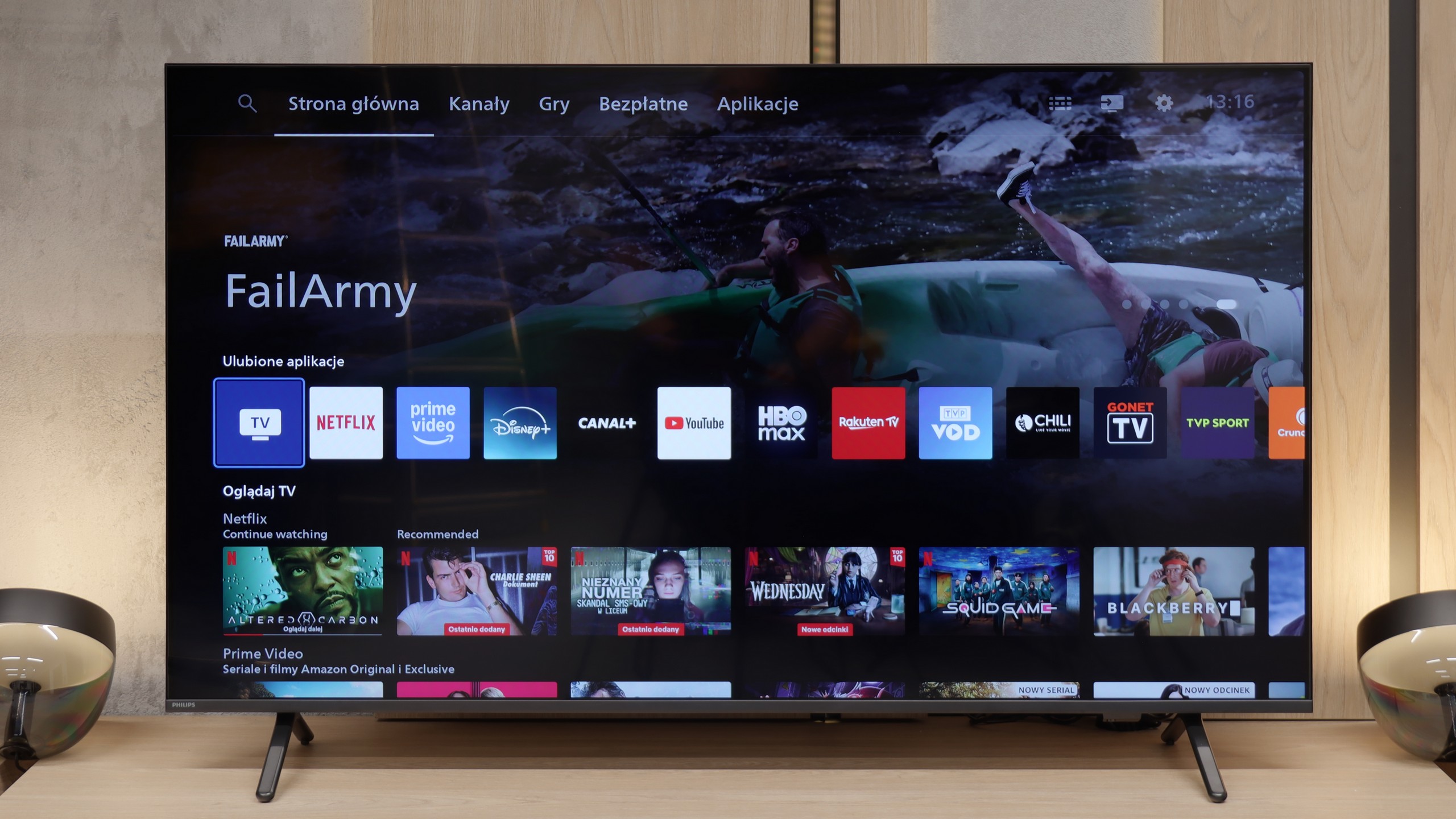
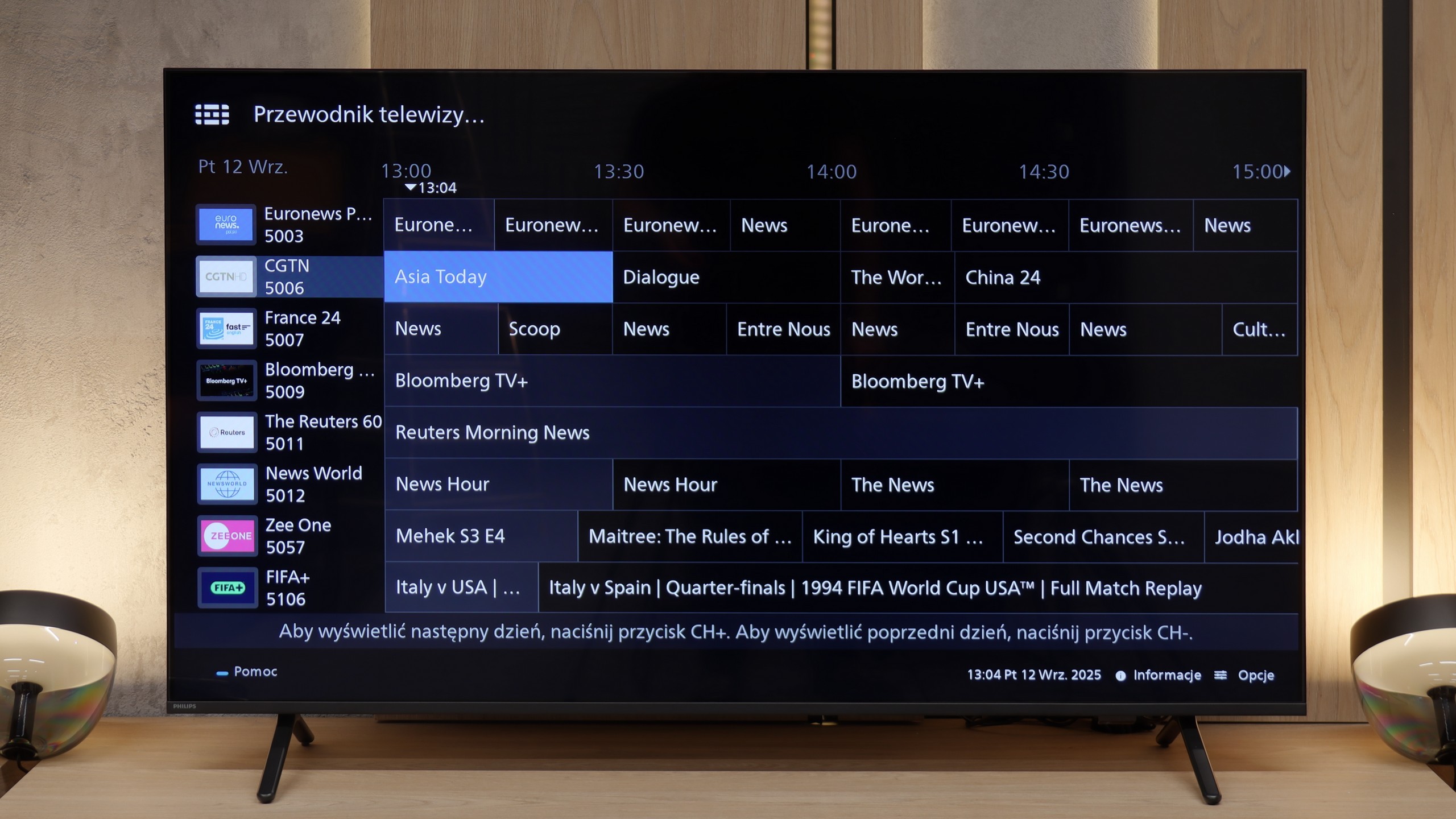
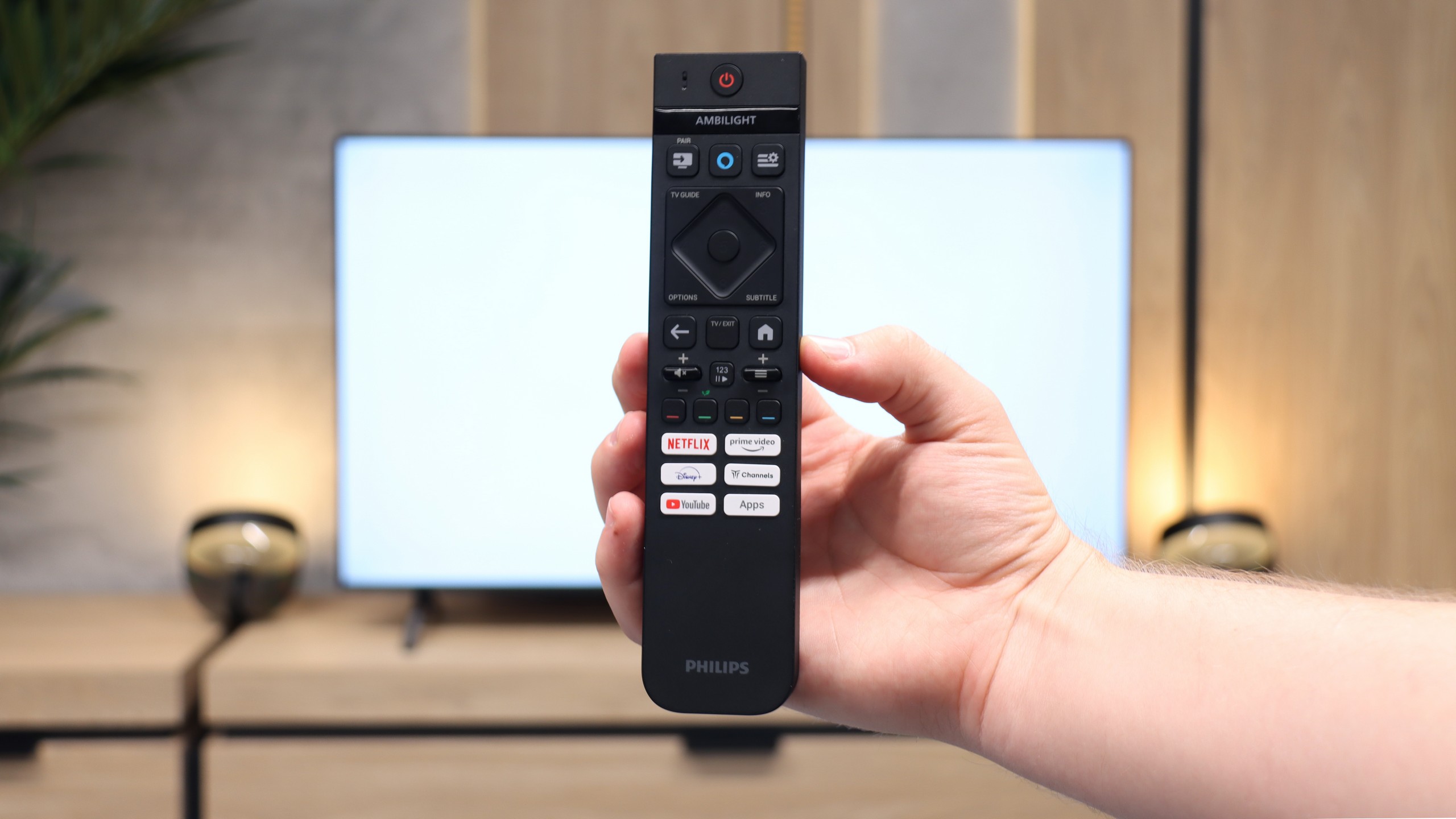
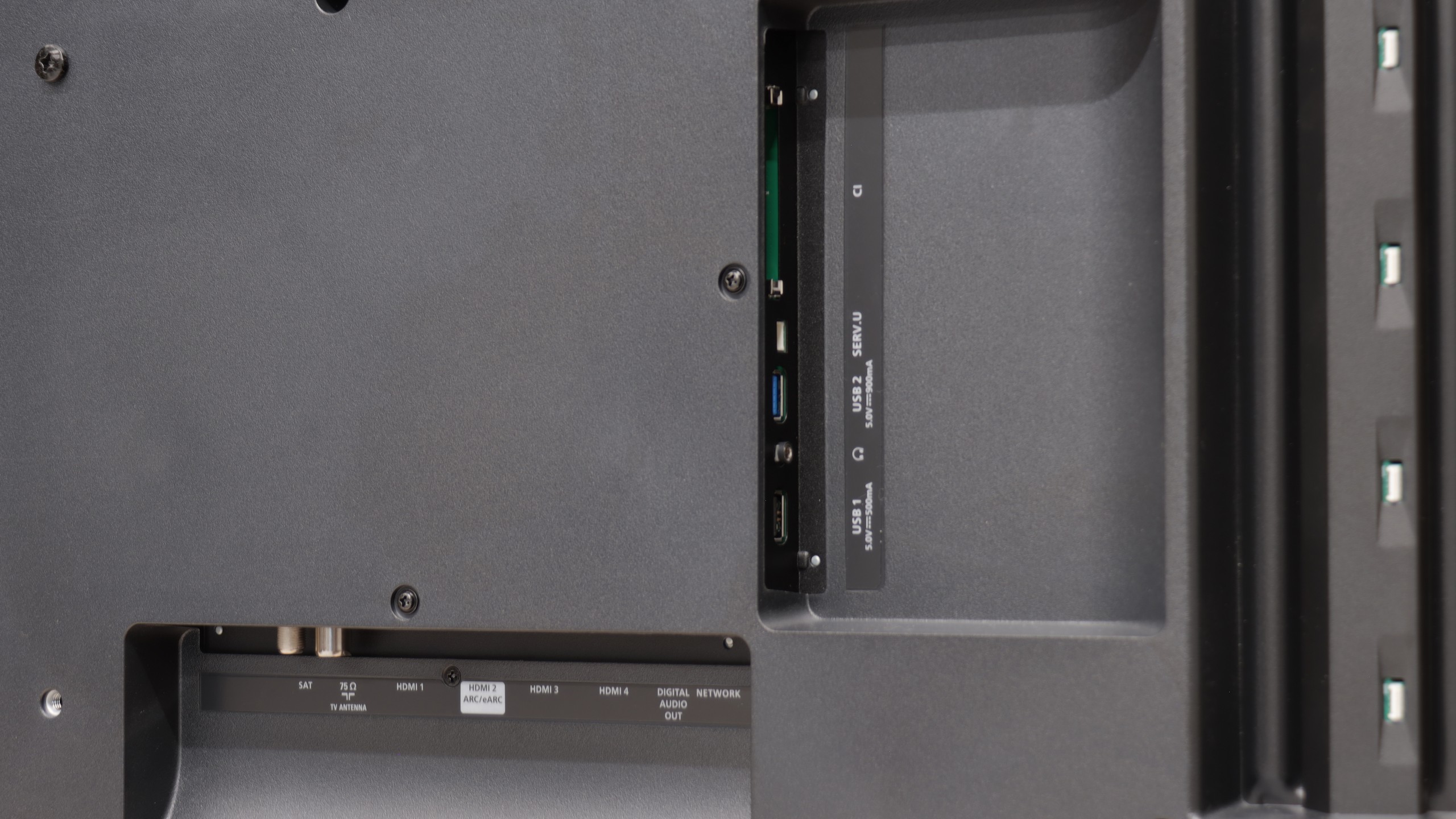
The Samsung QN92D television features a modern Tizen operating system, which offers users an intuitive and visually appealing environment. Tizen ensures smooth and fast navigation through applications, significantly enhancing the comfort of using the television. With an extensive ecosystem, users can easily connect the QN92D to other devices. The television supports many features that make everyday use easier, such as controlling set-top boxes with the remote, eliminating the need for multiple remotes. With AirPlay functionality, Apple device users can effortlessly stream multimedia from their iPhone. Additionally, there is a remote PC feature that allows users to access their computer on a large screen, as well as the Office 365 application, making the QN92D an ideal solution for both work and entertainment.
Furthermore, like many Samsung televisions, the QN92D offers Ambient Mode, which allows users to customise the appearance of the television to blend in with its surroundings. Users can display a variety of images or information, turning the television into an elegant part of the interior decor, even when not in use. Speaking of decor, it’s certainly worth mentioning the device's appearance. It is really very slim, around 2cm at its thickest point, which is impressive. The metal frame definitely gives the impression of a premium device, and the stand included in the box is sturdy.
However, for those using traditional television, the QN92D may prove to be a bit disappointing, as there is no television programme recording function available in the Polish market. Nevertheless, the television offers a Picture-in-Picture (PiP) feature that allows for simultaneous viewing of two programmes at the same time. The Samsung QN92D is a television with rich functionality that caters to both gaming enthusiasts and multimedia users, and it aesthetically fits into modern interiors.
Smart TV – Titan OS
Philips MLED920 uses the proprietary Titan OS, which is just starting its adventure in the TV market and unfortunately, this is evident at every turn. On one hand, we have basic features – such as AirPlay support or the ability to mirror content from a smartphone, but on the other hand, its limitations quickly become apparent. Screen mirroring works only with a phone, but not with a laptop. Voice search? Yes, but it only works with Amazon Alexa and in languages supported by this assistant. The system operates fairly quickly, but every now and then it can "fail" and gives the impression of something that is underdeveloped and still evolving.
Classic TV Functions
Titan OS also doesn't excel in terms of classic TV functions. Aside from the hybrid remote with a numeric keypad – which is indeed backlit and thoughtfully designed in two modes, it unfortunately operates on infrared – there’s nothing here that would truly set the MLED920 apart from the competition. There’s a lack of USB recording or a PiP function, and such solutions could be useful in this class. From unusual additions, we have an analog output in the form of a jack, which allows for connecting headphones or older speakers. It’s a small nod to users who still use older equipment.
Ambilight TV
What definitely draws attention away from the shortcomings of Titan OS is the unique, three-sided Ambilight system. Here, Philips still plays in its own league and can impress those who haven't experienced this feature before. The colour backlighting that reacts to the content on the screen adds a unique atmosphere to viewing sessions and is something that the competition does not offer in a similar form. It is precisely Ambilight that is meant to ensure that other shortcomings – both system-related and functional – take a back seat.
Playing files from USB
9.1/10
8.5/10
Supported photo formats:
Maximum photo resolution:

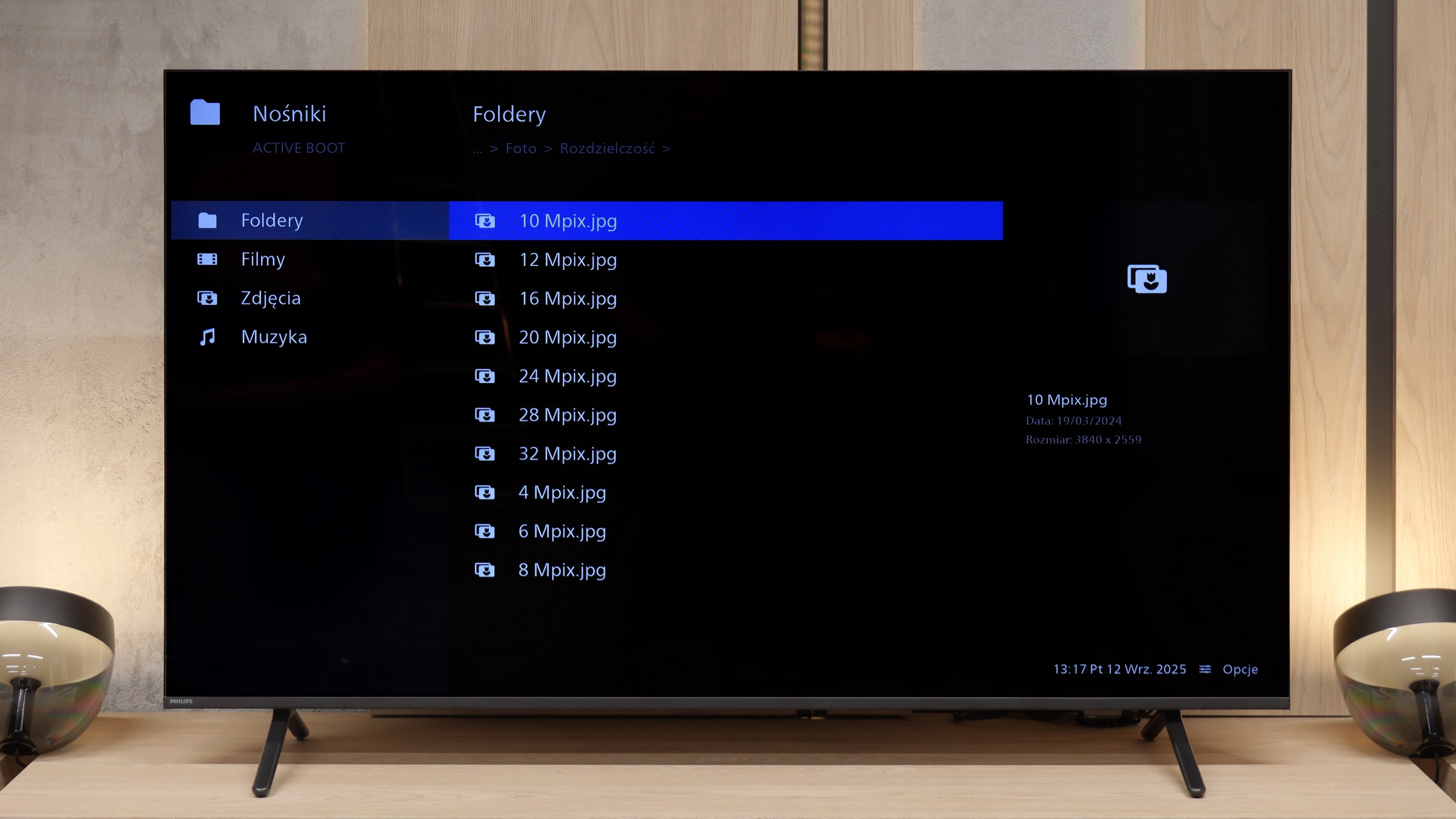
The built-in player in QN90D should satisfy a large portion of users. It will easily handle most popular video and audio formats. However, more demanding users may notice some shortcomings – it is not possible to play photos in HEIC format, which is popular on Apple devices, as well as several other, less common photo formats.
The built-in player in the Philips MLED920 works quite well and handles most popular audio and video files without any major issues – just as you can see in our test table. So there’s no worry about typical movie or music formats. The only complaint we can have is regarding its rather selective support for photo formats and some resolutions.
Apps
8.7/10
6.7/10














































Sound
6.9/10
6.2/10
- Maximum volume-88dB
- Dolby Digital Plus 7.1
- Dolby True HD 7.1
- Dolby Atmos in Dolby Digital Plus (JOC)
- Dolby Atmos in Dolby True HD
- DTS:X in DTS-HD MA
- DTS-HD Master Audio
The television is equipped similarly to the QN95 with a speaker system featuring a 4.2.2 layout with a total power of 70W (the exception is the 50' variant with a 2.2 layout and the 43' with a 2.0 layout). Despite its very slim casing, the television sounds loud and clear, and the overall sound is well balanced. Points were deducted as per standard practice for every other Samsung model for the lack of support for the DTS format. It's also worth mentioning the proprietary Q-Symphony feature, which allows you to synchronise the sound of the television with a Samsung soundbar.
The sound in the Philips MLED920 is probably not the element that will impress you the most. It sounds fairly flat, lacking depth and clearer bass, which means movies or concerts don't have that extra layer of immersion that a better audio system can provide. However, it must be said that the volume is at a really decent level – the TV can ramp up to even 88 decibels. A big plus of the MLED920 is not so much the sound quality itself, but the support for audio formats. Philips has ensured compatibility with virtually all the major standards, including Dolby Atmos, DTS, and Dolby TrueHD 7.1. This means that if someone decides to connect an external soundbar or amplifier, they won't encounter any limitations and will be able to enjoy the full cinema sound.
Sound Quality Test
No sound test video
Acoustic Measurements
No acoustic data
88dBC (Max)
75dBC


